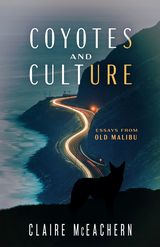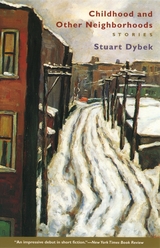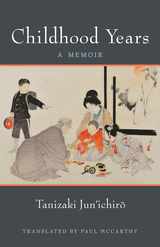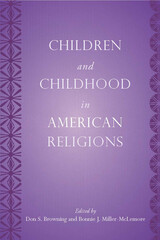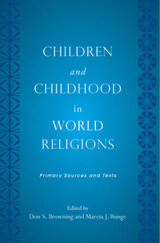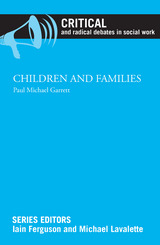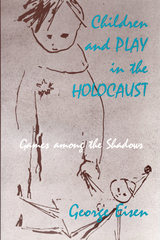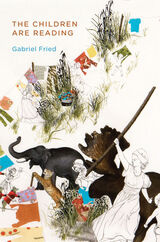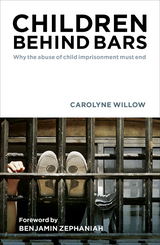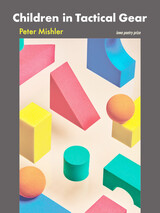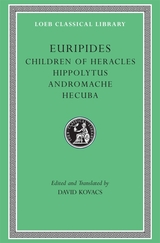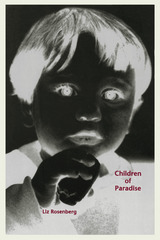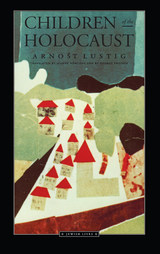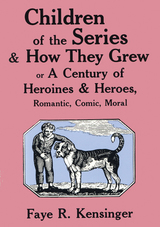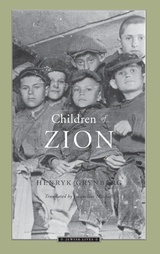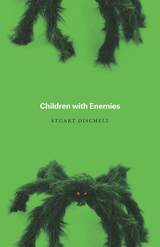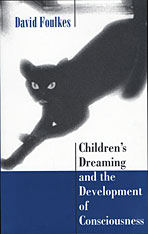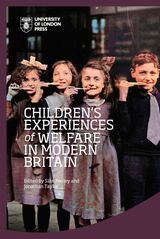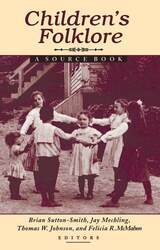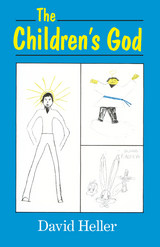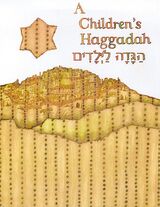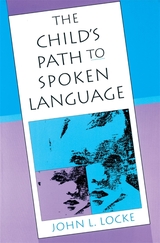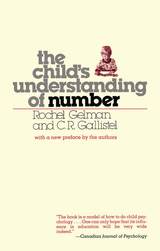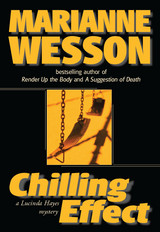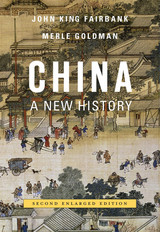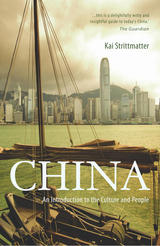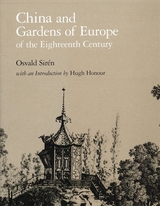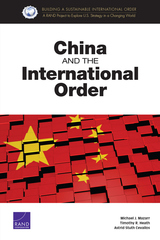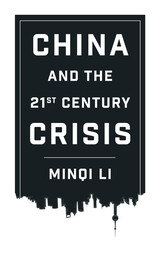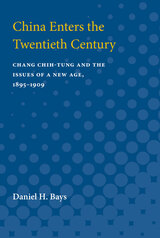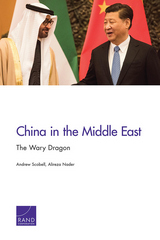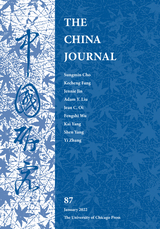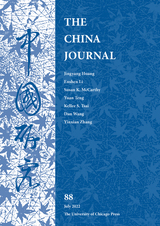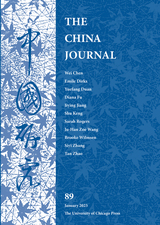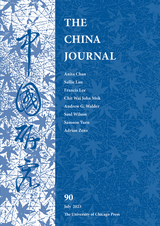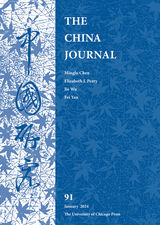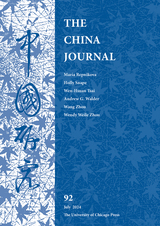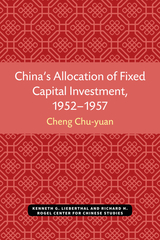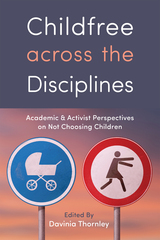 Childfree across the Disciplines: Academic and Activist Perspectives on Not Choosing Children
Davinia Thornley
Rutgers University Press, 2022 Recently, childfree people have been foregrounded in mainstream media. More than seven percent of Western women choose to remain childfree and this figure is increasing. Being childfree challenges the ‘procreation imperative’ residing at the center of our hetero-normative understandings, occupying an uneasy position in relation to—simultaneously—traditional academic ideologies and prevalent social norms. After all, as Adi Avivi recognizes, "if a woman is not a mother, the patriarchal social order is in danger." This collection engages with these (mis)perceptions about childfree people: in media representations, demographics, historical documents, and both psychological and philosophical models. Foundational pieces from established experts on the childfree choice--Rhonny Dam, Laurie Lisle, Christopher Clausen, and Berenice Fisher--appear alongside both activist manifestos and original scholarly work, comprehensively brought together. Academics and activists in various disciplines and movements also riff on the childfree life: its implications, its challenges, its conversations, and its agency—all in relation to its inevitability in the 21st century. Childfree across the Disciplines unequivocally takes a stance supporting the subversive potential of the childfree choice, allowing readers to understand childfreedom as a sense of continuing potential in who—or what—a person can become.
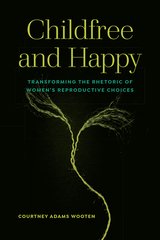 Childfree and Happy: Transforming the Rhetoric of Women's Reproductive Choices
Courtney Adams Wooten
Utah State University Press, 2023 Childfree and Happy examines how millennia of reproductive beliefs (or doxa) have positioned women who choose not to have children as deviant or outside the norm. Considering affect and emotion alongside the lived experiences of women who have chosen not to have children, Courtney Adams Wooten offers a new theoretical lens to feminist rhetorical scholars’ examinations of reproductive rhetorics and how they circulate through women’s lives by paying attention not just to spoken or written beliefs but also to affectual circulations of reproductive doxa.
Through interviews with thirty-four childfree women and analysis of childfree rhetorics circulating in historical and contemporary texts and events, this book demonstrates how childfree women individually and collectively try to speak back to common beliefs about their reproductive experiences, even as they struggle to make their identities legible in a sociocultural context that centers motherhood. Childfree and Happy theorizes how affect and rhetoric work together to circulate reproductive doxa by using Sara Ahmed’s theories of gendered happiness scripts to analyze what reproductive doxa is embedded in those scripts and how they influence rhetoric by, about, and around childfree women.
Delving into how childfree women position their decision not to have children and the different types of interactions they have with others about this choice, including family members, friends, colleagues, and medical professionals, Childfree and Happy also explores how communities that make space for alternative happiness scripts form between childfree women and those who support them. It will be of interest to scholars in the fields of the rhetoric of motherhood/mothering, as well as feminist rhetorical studies.
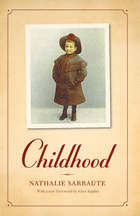 Childhood
Nathalie Sarraute
University of Chicago Press, 2013 As one of the leading proponents of the nouveau roman, Nathalie Sarraute is often remembered for her novels, including The Golden Fruits, which earned her the Prix international de litterature in 1964. But her carefully crafted and evocative memoir Childhood may in fact be Sarraute’s most accessible and emotionally open work. Written when the author was eighty-three years old, but dealing with only the first twelve years of her life, Childhood is constructed as a dialogue between Sarraute and her memory. Sarraute gently interrogates her interlocutor in search of her own intentions, more precise accuracy, and indeed, the truth. Her relationships with her mother in Russia and her stepmother in Paris are especially heartbreaking: long-gone actions are prodded and poked at by Sarraute until they yield some semblance of fact, imbuing these maternalistic interactions with new, deeper meaning. Each vignette is bristling with detail and shows the power of memory through prose by turns funny, sad, and poetic. Capturing the ambience of Paris and Russia in the earliest part of the twentieth century, while never giving up the lyrical style of Sarraute’s novels, this book has much to offer both memoir enthusiasts and fiction lovers.
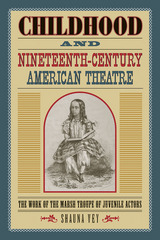 Childhood and Nineteenth-Century American Theatre: The Work of the Marsh Troupe of Juvenile Actors
Shauna Vey
Southern Illinois University Press, 2015 From 1855 until 1863, the Marsh Troupe of Juvenile Comedians, a professional acting company of approximately thirty children, entertained audiences with their nuanced performances of adult roles on stages around the globe. In Childhood and Nineteenth-Century American Theatre: The Work of the Marsh Troupe of Juvenile Actors, author Shauna Vey provides an insightful account not only of this unique antebellum stage troupe but also of contemporary theatre practices and the larger American culture, including shifts in the definition of childhood itself.
Looking at the daily work lives of five members of the Marsh Troupe—the father and manager, Robert Marsh, and four child performers, Mary Marsh, Alfred Stewart, Louise Arnot, and Georgie Marsh—Vey reveals the realities of the antebellum theatre and American society: the rise of the nineteenth-century impresario; the emerging societal constructions of girlhood and goodness; the realities of child labor; the decline of the apprenticeship model of actor training; shifts in gender roles and the status of working women; and changes in the economic models of theatre production, including the development of the stock company system.
Both a microhistory of a professional theatre company and its juvenile players in the decade before the Civil War and a larger narrative of cultural change in the United States, Childhood and Nineteenth-Century American Theatre sheds light on how childhood was idealized both on and off the stage, how the role of the child in society shifted in the nineteenth century, and the ways economic value and sentiment contributed to how children were viewed.
Childhood and Other Neighborhoods: Stories
Stuart Dybek
University of Chicago Press, 2003 In Stuart Dybek's Chicago, wonder lurks in unexpected places—in garbage-strewn alleys, gloomy basement apartments, abandoned rooms at the top of rickety stairs periodically rumbled by passing el trains. Transformed through the wide eyes of Dybek's adolescent heroes, these grimy urban backwaters become exotic landscapes of fear-filled possibility, of dreams not yet turned to nightmares. Chronicling what happens when Old World faith meets the dark side of the American dream, Dybek's poignant stories of coming of age in Chicago alternately appall, amaze, and just simply entertain.
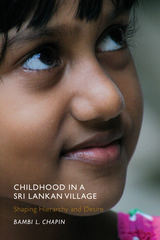 Childhood in a Sri Lankan Village: Shaping Hierarchy and Desire
Chapin, Bambi L
Rutgers University Press, 2014 Like toddlers all over the world, Sri Lankan children go through a period that in the U.S. is referred to as the “terrible twos.” Yet once they reach elementary school age, they appear uncannily passive, compliant, and undemanding compared to their Western counterparts. Clearly, these children have undergone some process of socialization, but what?
Over ten years ago, anthropologist Bambi Chapin traveled to a rural Sri Lankan village to begin answering this question, getting to know the toddlers in the village, then returning to track their development over the course of the following decade. Childhood in a Sri Lankan Village offers an intimate look at how these children, raised on the tenets of Buddhism, are trained to set aside selfish desires for the good of their families and the community. Chapin reveals how this cultural conditioning is carried out through small everyday practices, including eating and sleeping arrangements, yet she also explores how the village’s attitudes and customs continue to evolve with each new generation.
Combining penetrating psychological insights with a rigorous observation of larger social structures, Chapin enables us to see the world through the eyes of Sri Lankan children searching for a place within their families and communities. Childhood in a Sri Lankan Village offers a fresh, global perspective on child development and the transmission of culture.
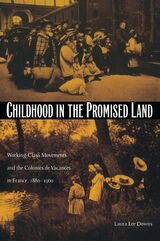 Childhood in the Promised Land: Working-Class Movements and the Colonies de Vacances in France, 1880–1960
Laura Lee Downs
Duke University Press, 2002 Childhood in the Promised Land is the first history of France's colonies de vacances, a vast network of summer camps created for working-class children. The colonies originated as a late-nineteenth-century charitable institution, providing rural retreats intended to restore the fragile health of poor urban children. Participation grew steadily throughout the first half of the twentieth century, "trickling up" by the late 1940s to embrace middle-class youth as well. At the heart of the study lie the municipal colonies de vacances, organized by the working-class cities of the Paris red belt. Located in remote villages or along the more inexpensive stretches of the Atlantic coast, the municipal colonies gathered their young clientele into variously structured "child villages," within which they were to live out particular, ideal visions of the collective life of children throughout the long summer holiday. Focusing on the creation of and participation in these summer camps, Laura Lee Downs presents surprising insights into the location and significance of childhood in French working-class cities and, ultimately, within the development of modern France. Drawing on a rich array of historical sources, including dossiers and records of municipal colonies discovered in remote town halls of the Paris suburbs, newspaper accounts, and interviews with adults who participated in the colonies as children, Downs reveals how diverse groups—including local Socialist and Communist leaders and Catholic seminarians—seized the opportunity to shape the minds and bodies of working-class youth. Childhood in the Promised Land shows how, in creating the summer camps, these various groups combined pedagogical theories, religious convictions, political ideologies, and theories about the relationship between the countryside and children's physical and cognitive development. At the same time, the book sheds light on classic questions of social control, highlighting the active role of the children in shaping their experiences.
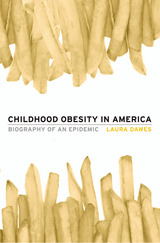 Childhood Obesity in America: Biography of an Epidemic
Laura Dawes
Harvard University Press, 2014 A century ago, a plump child was considered a healthy child. No longer. An overweight child is now known to be at risk for maladies ranging from asthma to cardiovascular disease, and obesity among American children has reached epidemic proportions. Childhood Obesity in America traces the changes in diagnosis and treatment, as well as popular understanding, of the most serious public health problem facing American children today.
Excess weight was once thought to be something children outgrew, or even a safeguard against infectious disease. But by the mid-twentieth century, researchers recognized early obesity as an indicator of lifelong troubles. Debates about its causes and proper treatment multiplied. Over the century, fat children were injected with animal glands, psychoanalyzed, given amphetamines, and sent to fat camp. In recent decades, an emphasis on taking personal responsibility for one’s health, combined with commercial interests, has affected the way the public health establishment has responded to childhood obesity—and the stigma fat children face. At variance with this personal emphasis is the realization that societal factors, including fast food, unsafe neighborhoods, and marketing targeted at children, are strongly implicated in weight gain. Activists and the courts are the most recent players in the obesity epidemic’s biography.
Today, obesity in this age group is seen as a complex condition, with metabolic, endocrine, genetic, psychological, and social elements. Laura Dawes makes a powerful case that understanding the cultural history of a disease is critical to developing effective health policy.
Childhood Years: A Memoir
Tanizaki Jun'ichiro; Translated by Paul McCarthy
University of Michigan Press, 2017 In Childhood Years, originally published serially in a literary magazine between 1955 and 1956, Tanizaki Jun’ichirō (1886–1965) takes a meandering look back on his early life in Tokyo. He reflects on his upbringing, family, and the capital city with a conversational—and not necessarily honest—eye, offering insights into his later life and his writing.
Children and Childhood in American Religions
Browning, Don S
Rutgers University Press, 2009 Whether First Communion or bar mitzvah, religious traditions play a central role in the lives of many American children. In this collection of essays, leading scholars reveal for the first time how various religions interpret, reconstruct, and mediate their traditions to help guide children and their parents in navigating the opportunities and challenges of American life. The book examines ten religions, among other topics: - How the Catholic Church confronts the tension between its teachings about children and actual practic
- The Oglala Lakota's struggle to preserve their spiritual tradition
- The impact of modernity on Hinduism
Only by discussing the unique challenges faced by all religions, and their followers, can we take the first step toward a greater understanding for all of us.
Children and Childhood in World Religions: Primary Sources and Texts
Browning, Don S
Rutgers University Press, 2009 While children figure prominently in religious traditions, few books have directly explored the complex relationships between children and religion. This is the first book to examine the theme of children in major religions of the world. Each of six chapters, edited by world-class scholars, focuses on one religious tradition and includes an introduction and a selection of primary texts ranging from legal to liturgical and from the ancient to the contemporary. Through both the scholarly introductions and the primary sources, this comprehensive volume addresses a range of topics, from the sanctity of birth to a child's relationship to evil, showing that issues regarding children are central to understanding world religions and raising significant questions about our own conceptions of children today.
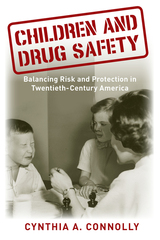 Children and Drug Safety: Balancing Risk and Protection in Twentieth-Century America
Connolly, Cynthia A
Rutgers University Press, 2018 Winner of the 2018 Arthur J. Viseltear Award from the Medical Care Section of the American Public Health Association
Children and Drug Safety traces the development, use, and marketing of drugs for children in the twentieth century, a history that sits at the interface of the state, business, health care providers, parents, and children. This book illuminates the historical dimension of a clinical and policy issue with great contemporary significance—many of the drugs administered to children today have never been tested for safety and efficacy in the pediatric population.
Each chapter of Children and Drug Safety engages with major turning points in pediatric drug development; themes of children’s risk, rights, protection and the evolving context of childhood; child-rearing; and family life in ways freighted with nuances of race, class, and gender. Cynthia A. Connolly charts the numerous attempts by Congress, the Food and Drug Administration, the American Academy of Pediatrics, and leading pediatric pharmacologists, scientists, clinicians, and parents to address a situation that all found untenable.
Open access edition funded by the National Endowment for the Humanities.
The text of this book is licensed under a Creative Commons Attribution NonCommercial-NoDerivatives 4.0 International License: https://creativecommons.org/licenses/by-nc-nd/4.0/
Children and Families
Edited by Paul Michael Garrett
Bristol University Press, 2014 In recent years a number of child protection scandals have surfaced in which children—often from poor and marginalized communities—suffer violence, abuse, and social harm. In Children and Families, the contributors look at the impact of marketization on social work services in both Ireland and England in the context of such scandals. They argue that marketization has had a negative impact on social work policies and practices, reducing the quality and availability of services for vulnerable children and young people. Paul Michael Garrett is then joined by leading researchers from across the globe to examine evidence from a range of policy regimes that highlight marketization’s negative effects.
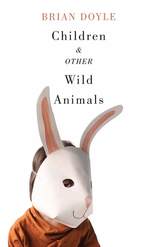 Children and Other Wild Animals: Notes on badgers, otters, sons, hawks, daughters, dogs, bears, air, bobcats, fishers, mascots, Charles Darwin, newts, sturgeon, roasting squirrels, parrots, elk, foxes, tigers and various other zoological matters
Brian Doyle
Oregon State University Press, 2014 In Children and Other Wild Animals, bestselling novelist Brian Doyle (Mink River, The Plover) describes encounters with astounding beings of every sort and shape. These true tales of animals and human mammals (generally the smaller sizes, but here and there elders and jumbos) delightfully blur the line between the two.
In these short vignettes, Doyle explores the seethe of life on this startling planet, the astonishing variety of our riveting companions, and the joys available to us when we pause, see, savor, and celebrate the small things that are not small in the least.
Doyle’s trademark quirky prose is at once lyrical, daring, and refreshing; his essays poignant but not pap, sharp but not sermons, and revelatory at every turn. Throughout there is humor and humility and a palpable sense of wonder, with passages of reflection so true and hard earned they make you stop and reread a line, a paragraph, a page.
Children & Other Wild Animals gathers previously unpublished work with selections that have appeared in Orion, The Sun, Utne Reader, High Country News, and The American Scholar, as well as Best American Essays (“The Greatest Nature Essay Ever”) and Best American Nature and Science Writing (“Fishering”). “The Creature Beyond the Mountain,” Doyle’s paean to the mighty and mysterious sturgeon of the Pacific Northwest, won the John Burroughs Award for Outstanding Nature Essay. As he notes in that tribute to all things “sturgeonness”:
“Sometimes you want to see the forest and not the trees. Sometimes you find yourself starving for what’s true, and not about a person but about all people. This is how religion and fascism were born, but it’s also why music is the greatest of arts, and why stories matter, and why we all cannot help staring at fires and great waters.”
Children and Play in the Holocaust: Games among the Shadows
George Eisen
University of Massachusetts Press, 1988 Occasionally an accident of research produces a book more engaging than the one the historian originally intended. While sifting through material for his Ph.D. dissertation, which dealt with an entirely different topic, Eisen came across a diary from the Vilna ghetto written by Zelig Kalmanovitch. His tone was sober, but not entirely so. The passage that caught Eisen's eye concerned a playground erected around 1942 and the author's inner conflict surrounded the coexistence of games and sports and mass murder in the ghetto.
 Children and Transitional Justice: Truth-Telling, Accountability and Reconciliation
Sharanjeet Parmar
Harvard University Press Children are increasingly a focus of international and national courts and truth commissions. Their participation, including through testimony that bears witness to their experiences, demonstrates their critical role in truth, justice, and reconciliation processes. If children are to engage, however, their rights must be respected.
This book includes analysis of the recent involvement of children in transitional justice processes in Liberia, Peru, Sierra Leone, and South Africa. It also explores key areas of current debates among legal scholars and child rights advocates, such as international criminal responsibility, traditional and restorative justice, reparations, psychosocial support for child witnesses, and links between education and reconciliation.
The book emphasizes how children must be engaged during post-conflict transition. If children are excluded, they may become vulnerable to a continuing cycle of violence, affecting future generations. In contrast, through active involvement in transitions, children and adolescents can be the catalysts for justice, reconciliation, and peace-building within their own families and communities.
 Children and Youth in America
Robert H. Bremner
Harvard University Press Public provision for the rights of children has, at last, a complete documentary history. In three volumes, covering United States history from 1600 to the present, this is a monumental contribution in an area central to American domestic policy.
All aspects of the welfare of children are considered. The documents, as comprehensive as they are diverse, are woven into an enlightening narrative of the fundamental issues involved in the place of youth in America.
The concluding volumes present forty years of tumultuous history. They begin with the problems and protests of youth in the 1930s; their response to depression, war, and the draft; their organizations and participation in struggles for equality; and their changing legal status. With the advent of the New Deal and continuing into the Nixon administration, the sources show a growing popular emphasis on the rights and welfare of children as well as a dramatic shift in the position and commitment of the federal government. Policies and programs are many and vigorous, but gaps, protests, and inequalities persist.
Upon the appearance of the first volume, Children and Youth in America was hailed as "an important event in the history of child welfare in the United States." Now completed, these volumes constitute an indispensable reference and absorbing chronicle of American social history.
 Children and Youth in America
Robert H. Bremner
Harvard University Press Although the number of people under twenty years of age in the United States rose from 17 million in 1860 to 47.6 million in 1930, the percentage of them in the total population declined sharply during the same seventy years from 51 percent to 38 percent. This declining proportion of children and young people to adults did not lessen concern for their welfare. On the contrary, as they became relatively less numerous, the young became in a way more visible, and their needs were more easily recognized.
This second of three volumes that trace the history of the nation's changing provisions for its youth covers the period from the end of the Civil War to the beginning of the New Deal. These were years rich in innovations which, although not fully realized, represented substantial advances in the welfare, education, and health of children. Much of the philanthropic energy of the late nineteenth and early twentieth centuries went into the provision of special facilities for children, who had formerly been treated in the same way as adults. State, and in some eases, federal legislation attempted to safeguard children against premature, excessive, and dangerous labor; sought to protect them against abuse. neglect, immorality, disease, and unsanitary surroundings: and compelled them to spend more time in school. The first White House Conference on the Care of Dependent and Neglected Children was convened by Theodore Roosevelt in 1909, and in 1912 the United States Children's Bureau was established. This single most important development in public provision for children during the early twentieth century signified the acceptance by the federal government of responsibility for promoting the health and welfare of the young.
In this two--book volume, major topics like the legal status of children, child health, and education have been broken down into specific areas so that the items of specialized concern are easily accessible. Some of the nearly 100 topics covered include birth control and abortion, the mothers' aid movement, theories and studies of juvenile delinquency, the progressive attack on child labor, and the child labor amendment. The Children's Bureau, the development of pediatric thought, the fight against infant mortality, child health and the Depression, the origin and development of the public high school, and the education of children of minority groups are also treated.
The text includes both published and unpublished, private and public documents. It is augmented with selected contemporary illustrations.
 Children and Youth in America
Robert H. Bremner
Harvard University Press, 1970 More than nine generations of children grew up in America between the founding of the first English colonies and the end of the Civil War. This book, the first of three volumes that will provide the most complete documentary history of public provision for American children, traces the changing attitudes of the nation toward youth during the first two and one half centuries of its history.
The editors have divided volume I into three units of time--1600-1735, 1735-1820, 1820-1865 each of which represents a stage in the development of public policies toward children. The question raised in the first section is: What is the function of government or the public authority when the child is a subject, not a citizen, of a private family government? The second part deals with the question: How does the public sector respond when children, although still officially subject to familial authority, practice the doctrines of self-help, independence, and self-interest? The third part asks: How did the state and the adult public regard children in a society marked by political and social change, population mobility, and rapid economic growth? What was expected of children? What was done for them? What was denied them?
The editors have chosen documents chronicling all aspects of the welfare of children, including education, child health, care of dependent children, child labor, juvenile delinquency and the special problems of children of minority and disadvantaged groups. They have skillfully linked the papers together with interpretive introductions and have woven them into a fascinating and enlightening narrative. The documents have been selected from both published and unpublished materials, private diaries and correspondence, as well as the records of governmental and voluntary agencies on the local, state, and national levels. In addition to the time divisions, the documents are arranged geographically and topically, though the rigid maintenance of topical distinctions has been avoided so that related topics may be presented from different viewpoints and organized in the most meaningful and useful way.
Volume II will cover the events occurring between 1866 and 1932, and Volume III will deal with policies adopted and developed since 1933. Each volume will include selected contemporary illustrations.
The Children Are Reading
Gabriel Fried
Four Way Books, 2017 The Children Are Reading inhabits childhood spaces, physical and imaginative, through the looking-glass of grown-up longing.
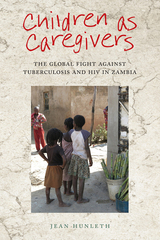 Children as Caregivers: The Global Fight against Tuberculosis and HIV in Zambia
Hunleth, Jean
Rutgers University Press, 2017 Winner of the 2018 Association for Africanist Anthropology Elliott P. Skinner Book Award In Zambia, due to the rise of tuberculosis and the closely connected HIV epidemic, a large number of children have experienced the illness or death of at least one parent. Children as Caregivers examines how well intentioned practitioners fail to realize that children take on active caregiving roles when their guardians become seriously ill and demonstrates why understanding children’s care is crucial for global health policy. Using ethnographic methods, and listening to the voices of the young as well as adults, Jean Hunleth makes the caregiving work of children visible. She shows how children actively seek to “get closer” to ill guardians by providing good care. Both children and ill adults define good care as attentiveness of the young to adults’ physical needs, the ability to carry out treatment and medication programs in the home, and above all, the need to maintain physical closeness and proximity. Children understand that losing their guardians will not only be emotionally devastating, but that such loss is likely to set them adrift in Zambian society, where education and advancement depend on maintaining familial, reciprocal relationships. View a gallery of images from the book (https://www.flickr.com/photos/childrenascaregivers) Download the open access ebook.
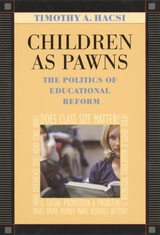 Children as Pawns: The Politics of Educational Reform
Timothy A. Hacsi
Harvard University Press, 2003 Head Start. Bilingual education. Small class size. Social promotion. School funding. Virtually every school system in America has had to face these issues over the past thirty years. Advocates and dissenters have declared confidently that "the research" is on their side. But is it?
In the first book to bring together the recent history of educational policy and politics with the research evidence, Timothy Hacsi presents the illuminating, often-forgotten stories of these five controversial topics. He sifts through the complicated evaluation research literature and compares the policies that have been adopted to the best evidence about what actually works. He lucidly explains what the major studies show, what they don't, and how they have been misunderstood and misrepresented. Hacsi shows how rarely educational policies are based on solid research evidence, and how programs that sound plausible simply do not satisfy the complex needs of real children.
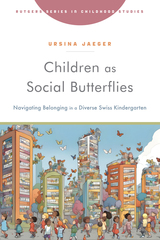 Children as Social Butterflies: Navigating Belonging in a Diverse Swiss Kindergarten
Ursina Jaeger
Rutgers University Press, 2025 Children as Social Butterflies examines how kindergarten children experience, negotiate, and claim belonging in a diverse and stigmatized Swiss neighborhood. Schools as formative instances of social belonging are particularly important where children with different migration histories are educated together. Childhood scholar Ursina Jaeger followed individual children in a kindergarten class from day one of their school enrollment and accompanied them to extracurricular activities, to ballet classes, to their children's rooms, to the social welfare office, or on family visits abroad. Based on data from several years of this child-centered and multisited research, Children as Social Butterflies offers a vivid ethnography with unique insights into the everyday lives of young children in a diverse neighborhood. The book provides an analytical language informed by theories of social differentiation to grasp complex configurations of social belonging and shows the full potential of ethnographic research with young children. Jaeger thus offers a dynamic reading of migration, schooling, and childhood that is strongly informed by the experience of working with young children. The book provides educators, childhood scholars, and parents alike with suggestions for dealing with (migration-related) social differentiation.
This book is also freely available online as an open-access digital edition, published with the support of the Swiss National Science Foundation.
 Children as Treasures: Childhood and the Middle Class in Early Twentieth Century Japan
Mark Jones
Harvard University Press, 2010 Mark Jones examines the making of a new child’s world in Japan between 1890 and 1930 and focuses on the institutions, groups, and individuals that reshaped both the idea of childhood and the daily life of children. Family reformers, scientific child experts, magazine editors, well-educated mothers, and other prewar urban elites constructed a model of childhood—having one’s own room, devoting time to homework, reading children’s literature, playing with toys—that ultimately became the norm for young Japanese in subsequent decades.
This book also places the story of modern childhood within a broader social context—the emergence of a middle class in early twentieth century Japan. The ideal of making the child into a “superior student” (yutosei) appealed to the family seeking upward mobility and to the nation-state that needed disciplined, educated workers able to further Japan’s capitalist and imperialist growth. This view of the middle class as a child-centered, educationally obsessed, socially aspiring stratum survived World War II and prospered into the years beyond.
Children Astray
Saul Drucker and Maurice Beck HexterIntroduction by Richard C. Cabot
Harvard University Press
Children Behind Bars: Why the Abuse of Child Imprisonment Must End
Carolyne Willow
Bristol University Press, 2015 Based on a wide range of research and first-person interviews, this book presents the shocking truth about child prisons and argues passionately for their closing. Carolyne Willow draws on human rights legislation and progress in the care and treatment of vulnerable children elsewhere to outline the harsh realities of penal child custody—hunger, dirty cells, the authorized infliction of severe pain, bullying and intimidation, and much more. Exploring these issues through the lens of protection rather than punishment, this compelling book reaches beyond any one country to address the plight of child prisoners around the globe.
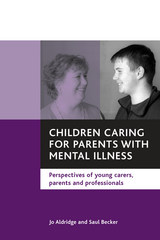 Children caring for parents with mental illness: Perspectives of young carers, parents and professionals
Jo Aldridge and Saul Becker
Bristol University Press, 2003 Little is known about the experiences of children living in families affected by severe and enduring mental illness. This is the first in-depth study of children and young people caring for parents affected in this way. Drawing on primary research data collected from 40 families, the book presents the perspectives of children (young carers), their parents and the key professionals in contact with them. Children caring for parents with mental illness makes an invaluable contribution to the growing evidence base on parental mental illness and outcomes for children. It:·[vbTab]is the first research-based text to examine the experiences and needs of children caring for parents with severe mental illness;·[vbTab]provides the perspectives of children, parents and key professionals in contact with these families;·[vbTab]reviews existing medical, social, child protection and young carers literatures on parental mental illness and consequences for children; ·[vbTab]provides a chronology and guide to relevant law and policy affecting young carers and parents with severe mental illness;·[vbTab]makes concrete recommendations and suggestions for improving policy and professional practice;·[vbTab]contributes to the growing evidence base on parental mental illness and outcomes for children and families.
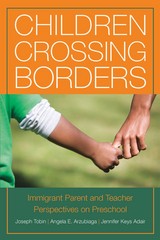 Children Crossing Borders: Immigrant Parent and Teacher Perspectives on Preschool for Children of Immigrants
Joseph Tobin
Russell Sage Foundation, 2013 In many school districts in America, the majority of students in preschools are children of recent immigrants. For both immigrant families and educators, the changing composition of preschool classes presents new and sometimes divisive questions about educational instruction, cultural norms and academic priorities. Drawing from an innovative study of preschools across the nation, Children Crossing Borders provides the first systematic comparison of the beliefs and perspectives of immigrant parents and the preschool teachers to whom they entrust their children. Children Crossing Borders presents valuable evidence from the U.S. portion of a landmark five-country study on the intersection of early education and immigration. The volume shows that immigrant parents and early childhood educators often have differing notions of what should happen in preschool. Most immigrant parents want preschool teachers to teach English, prepare their children academically, and help them adjust to life in the United States. Many said it was unrealistic to expect a preschool to play a major role in helping children retain their cultural and religious values. The authors examine the different ways that language and cultural differences prevent immigrant parents and school administrations from working together to achieve educational goals. For their part, many early education teachers who work with immigrant children find themselves caught between two core beliefs: on one hand, the desire to be culturally sensitive and responsive to parents, and on the other hand adhering to their core professional codes of best practice. While immigrant parents generally prefer traditional methods of academic instruction, many teachers use play-based curricula that give children opportunities to be creative and construct their own knowledge. Worryingly, most preschool teachers say they have received little to no training in working with immigrant children who are still learning English. For most young children of recent immigrants, preschools are the first and most profound context in which they confront the conflicts between their home culture and the United States. Policymakers and educators, however, are still struggling with how best to serve these children and their parents. Children Crossing Borders provides valuable research on these questions, and on the ways schools can effectively and sensitively incorporate new immigrants into the social fabric.
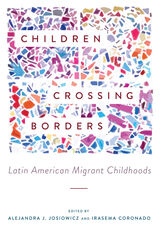 Children Crossing Borders: Latin American Migrant Childhoods
Edited by Alejandra J. Josiowicz and Irasema Coronado
University of Arizona Press, 2022 The Americas are witnessing an era of unprecedented human mobility. With their families or unaccompanied, children are part of this immense movement of people. Children Crossing Borders explores the different meanings of the lives of borderland children in the Americas. It addresses migrant children’s struggle to build a sense of belonging while they confront racism and estrangement on a daily basis.
Unified in their common interest in the well-being of children, the contributors bring an unrivaled breadth of experience and research to offer a transnational, multidimensional, and multilayered look at migrant childhoods in Latin America. Organized around three main themes—educational experiences; literature, art and culture, and media depictions; and the principle of the “best interest of the child”—this work offers both theoretical and practical approaches to the complexity of migrant childhood. The essays discuss family and school lives, children’s experience as wage laborers, and the legislation and policies that affect migrants.
This volume draws much-needed attention to the plight of migrant children and their families, illuminating the human and emotional toll that children experience as they crisscross the Americas. Exploring the connections between education, policy, cultural studies, and anthropology, the essays in this volume navigate a space of transnational children’s rights central to Latin American life in the twentieth and twenty-first centuries.
Contributors
Marissa Bejarano-Fernbaugh
Nancie Bouchard
Lina M. Caswell
Irasema Coronado
Valentina Glockner
Alejandra J. Josiowicz
Patrícia Nabuco Martuscelli
María Inés Pacecca
Martha Rodríguez-Cruz
Emily Ruehs-Navarro
Kathleen Tacelosky
Élisabeth Vallet
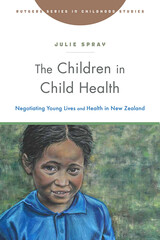 The Children in Child Health: Negotiating Young Lives and Health in New Zealand
Julie Spray
Rutgers University Press, 2020 Who are the children in child health policy? How do they live and see the world, and why should we know them? A journey into the lives of children coping in a world compromised by poverty and inequality, The Children in Child Health challenges the invisibility of children’s perspectives in health policy and argues that paying attention to what children do is critical for understanding the practical and policy implications of these experiences.
In the unique context of indigenous Māori and migrant Pacific children in postcolonial New Zealand, Julie Spray explores the intertwining issues of epidemic disease, malnutrition, stress, violence, self-harm, and death to address the problem of how scholars and policy-makers alike can recognize and respond to children as social actors in their health. The Children in Child Health innovatively combines perspectives from childhood studies, medical anthropology, and public health and policy together with evocative ethnography to show how a deep understanding of children’s worlds can change our approach to their care.
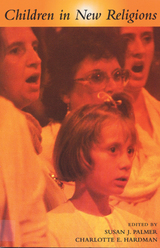 Children in New Religions
Palmer, Susan J
Rutgers University Press, 1999 The late 1960s and early 1970s constituted a remarkable period for spiritual experimentation and for the proliferation of new religious groups. Now the children born into these religions have come of age. While their parents made the decision as adults to embrace alternative religious practices, the children have been raised with a very different orientation toward the larger society. While they take their religious communities for granted, many of these children gaze with curiosity at the surrounding secular world which their parents, not they, chose to reject. The contributors to this volume examine children from many different alternative religious movements worldwide, including The Family, Hare Krishna, Wiccans, and Pagans, Messianic Communities, and the Rajneesh (Osho) Movement. The essays explore two general questions: 1) What impact does the presence of children have on a new religion's lifestyle and chance of surviving into the future? 2) Is child abuse more likely to occur in unconventional religions, or are children born into them, the 'new' religions have grown up and have become an important and rapidly changing social force that we cannot reasonably dismiss or wisely ignore
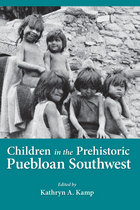 Children in Prehistoric Puebloan Southwest
Kathryn Kamp
University of Utah Press, 2002 Is there evidence of children in the archaeological record? Some would answer no, that "subadults" can only be distinguished when there is osteological confirmation. Others might suggest that the reason children don’t exist in prehistory is because no one has looked for them, much as no one had looked for women in the same context until recently. Focusing on the Southwest, contributors to this volume attempt to find some of those children, or at least show how they might be found. They address two issues: what was the cultural construction of childhood? What were childrens' lives like? Determining how cultures with written records have constructed childhood in the past is hard enough, but the difficulty is magnified in the case of ancient Puebloan societies. The contributors here offer approaches from careful analysis of artifacts and skeletal remains to ethnographic evidence in rock art. Topics include ceramics and evidence of child manufacture and painting, cradleboards, evidence of child labor, and osteological evidence of health conditions.
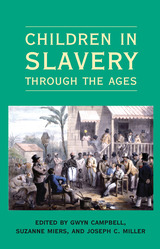 Children in Slavery through the Ages
Gwyn Campbell
Ohio University Press, 2009 Significant numbers of the people enslaved throughout world history have been children. The vast literature on slavery has grown to include most of the history of this ubiquitous practice, but nearly all of it concentrates on the adult males whose strong bodies and laboring capacities preoccupied the masters of the modern Americas. Children in Slavery through the Ages examines the children among the enslaved across a significant range of earlier times and other places; its companion volume will examine the children enslaved in recent American contexts and in the contemporary/modern world. This is the first collection to focus on children in slavery. These leading scholars bring our thinking about slaving and slavery to new levels of comprehensiveness and complexity. They further provide substantial historical depth to the abuse of children for sexual and labor purposes that has become a significant humanitarian concern of governments and private organizations around the world in recent decades. The collected essays in Children in Slavery through the Ages fundamentally reconstruct our understanding of enslavement by exploring the often-ignored role of children in slavery and rejecting the tendency to narrowly equate slavery with the forced labor of adult males. The volume’s historical angle highlights many implications of child slavery by examining the variety of children’s roles—as manual laborers and domestic servants to court entertainers and eunuchs—and the worldwide regions in which the child slave trade existed.
Children in Tactical Gear
Peter Mishler
University of Iowa Press, 2024 Children in Tactical Gear offers a brilliant feed of stark incantations and unsparing satire. Set in distinctly American landscapes, including toy weapon assembly lines and the compounds of the super rich, and voiced by imperiled children, failed adults, and even a smart home speaker, this collection demonstrates the unsettling force of a surreal imagination under duress.
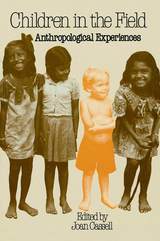 Children In The Field
edited by Joan Cassell
Temple University Press, 1994 "The wisdom of taking children on this journey into the abyss of otherness is debatable. That's the point: the unsettled (and unsettling) quality of this book is what makes it worth reading and pondering."
--The Women's Review of Books
The conditions under which knowledge is acquired help shape that knowledge. Yet, until quite recently, the conditions under which anthropologists observe and interact with members of other cultures were considered the stuff of memoirs, not science. Although many families have accompanied anthropologists to the field, few researchers have discussed this aspect of scientific life. This collection of narratives by anthropologists who brought children with them into the field combines personal drama, practical information, and advice with an examination of the way in which the presence of children can alter the relationship between those who study and those who are studied.
The stories are funny, sad, horrifying, fascinating. Each essay presents different field conditions, locations, family constellations, experiences, and reactions. Photographs of the anthropologists and their children enhance the engaging and illuminating accounts. This book, the first study of its kind, will be essential reading for anyone involved in field research.
"A superb collection of papers documenting the value, trauma, joy, and frustration of taking children along on a field work adventure. This book covers, among other topics: burying a child in the field, bearing a child in the field, analysis of the hardships children face in a difficult field experience, and children serving as role models in language learning and the establishment of rapport with community members. This should be required reading for anyone anticipating a field work experience."
--Sue-Ellen Jacobs, University of Washington
"[These] stories...present the missing factor in anthropological research, which is after all supposed to be producing the most human of disciplines, involved with the intercultural world of woman alive and man alive; at last in this book we have children alive. The volume covers difficulties both of family and field situation and truthfully faces the differences in cultures.... The vignettes of children's lives are unforgettable."
--Edith L.B. Turner, University of Virginia
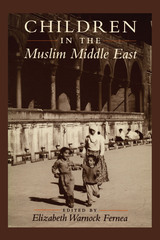 Children in the Muslim Middle East
Edited by Elizabeth Warnock Fernea
University of Texas Press, 1995 Today nearly half of all people in the Middle East are under the age of fifteen. Yet little is known about the new generation of boys and girls who are growing up in a world vastly different from that of their parents, a generation who will be the leaders of tomorrow. This groundbreaking anthology is an attempt to look at the current situation of children by presenting materials by both Middle Eastern and Western scholars. Many of the works have been translated from Arabic, Persian, and French. The forty-one pieces are organized into sections on the history of childhood, growing up, health, work, education, politics and war, and play and the arts. They are presented in many forms: essays in history and social science, poems, proverbs, lullabies, games, and short stories. Countries represented are Egypt, Jordan, Morocco, Tunisia, Israel/West Bank, Kuwait, Saudi Arabia, Iran, Iraq, Syria, Sudan, Lebanon, Turkey, Yemen, and Afghanistan. This book complements Elizabeth Fernea's earlier works, Women and the Family in the Middle East and Middle Eastern Muslim Women Speak (coedited with Basima Bezirgan). Like them, it will be important reading for everyone interested in the Middle East and in women's and children's issues.
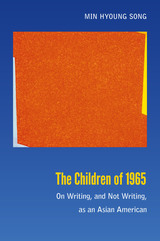 The Children of 1965: On Writing, and Not Writing, as an Asian American
Min Hyoung Song
Duke University Press, 2013 Since the 1990s, a new cohort of Asian American writers has garnered critical and popular attention. Many of its members are the children of Asians who came to the United States after the Immigration and Nationality Act of 1965 lifted long-standing restrictions on immigration. This new generation encompasses writers as diverse as the graphic novelists Adrian Tomine and Gene Luen Yang, the short story writer Nam Le, and the poet Cathy Park Hong. Having scrutinized more than one hundred works by emerging Asian American authors and having interviewed several of these writers, Min Hyoung Song argues that collectively, these works push against existing ways of thinking about race, even as they demonstrate how race can facilitate creativity. Some of the writers eschew their identification as ethnic writers, while others embrace it as a means of tackling the uncertainty that many people feel about the near future. In the literature that they create, a number of the writers that Song discusses take on pressing contemporary matters such as demographic change, environmental catastrophe, and the widespread sense that the United States is in national decline.
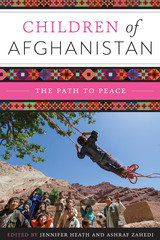 Children of Afghanistan: The Path to Peace
Edited by Jennifer Heath and Ashraf Zahedi
University of Texas Press, 2014 The first comprehensive look at youth living in a country attempting to rebuild itself after three decades of civil conflict, Children of Afghanistan relies on the research and fieldwork of twenty-one experts to cover an incredible range of topics. Focusing on the full scope of childhood, from birth through young adulthood, this edited volume examines a myriad of issues: early childhood socialization in war and peace; education, literacy, vocational training, and apprenticeship; refugee life; mental and physical health, including disabilities and nutrition; children’s songs, folktales, and art; sports and play; orphans; life on the streets; child labor and children as family breadwinners; child soldiers and militarization; sexual exploitation; growing up in prison; marriage; family violence; and other issues vital to understanding, empowerment, and transformation. Children of Afghanistan is the first volume that not only attempts to analyze the range of challenges facing Afghan children across class, gender, and region but also offers solutions to the problems they face. With nearly half of the population under the age of fifteen, the future of the country no doubt lies with its children. Those who seek peace for the region must find solutions to the host of crises that have led the United Nations to call Afghanistan “the worst place on earth to be born.” The authors of Children of Afghanistan provide child-centered solutions to rebuilding the country’s cultural, social, and economic institutions.
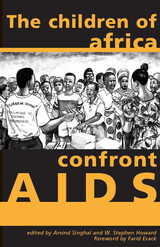 The Children Of Africa Confront AIDS: From Vulnerability To Possibility
Arvind Singhal
Ohio University Press, 2003 AIDS is now the leading cause of death in Africa, where twenty-eight million people are HIV-positive, and where some twelve million children have lost one or both parents to AIDS. In Zimbabwe, 45 percent of children under the age of five are HIV-positive, and the epidemic has shortened life expectancy by twenty-two years. A fifteen-year-old in Botswana or South Africa has a one-in-two chance of dying of AIDS. AIDS deaths are so widespread in sub-Saharan Africa that small children now play a new game called “Funerals.” The Children of Africa Confront AIDS depicts the reality of how African children deal with the AIDS epidemic, and how the discourse of their vulnerability affects acts of coping and courage. A project of the Institute for the African Child at Ohio University, The Children of Africa Confront AIDS cuts across disciplines and issues to focus on the world’s most marginalized population group, the children of Africa. Editors Arvind Singhal and Stephen Howard join conversations between humanitarian and political activists and academics, asking, “What shall we do?” Such discourse occurs in African contexts ranging from a social science classroom in Botswana to youth groups in Kenya and Ghana. The authors describe HIV/AIDS in its macro contexts of vulnerable children and the continent’s democratization movements and also in its national contexts of civil conflict, rural poverty, youth organizations, and agencies working on the ground. Singhal, Howard, and other contributors draw on compelling personal experience in descriptions of HIV/AIDS interventions for children in difficult circumstances and present thoughtful insights into data gathered from surveys and observations concerning this terrible epidemic.
Children of Alcoholics: A Critical Appraisal of Theory and Research
Kenneth J. Sher
University of Chicago Press, 1991 This study offers a comprehensive, critical look at what is known and not known about children of alcoholics, and also constructs a model for assessing existing theory and introducing new methodological rigor into this field.
Children of Atlantis
Zdenko Lešic
Central European University Press, 1995 The many young people who have fled the former Yugoslavia in the face of war, nationalism and the draft here describe the circumstances which drove them to leave their homes and the way they see their future. Children of Atlantis offers a snapshot of virtually a whole generation of young people on the threshold of their working lives, uprooted from the world in which they grew up, confronting the task of making something of their lives in the face of the catastrophe that has overwhelmed them, their families, their friends and their homeland. Their voices are varied, expressing pain, anger, uncertainty, hope and the positive energy of youth. What they have in common is a sense of disbelief and bewilderment at the forces unleashed in what was their country.
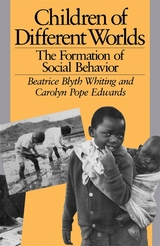 Children of Different Worlds: The Formation of Social Behavior
Beatrice Whiting and Carolyn Pope Edwards
Harvard University Press, 1988 The culmination of twenty years of research, this book is a cross-cultural exploration of the ways in which age, gender, and culture affect the development of social behavior in children. The authors and their associates observed children between the ages of two and ten going about their daily lives in communities in Africa, India, the Philippines, Okinawa, Mexico, and the United States. This rich fund of data has enabled them to identify the types of social behavior that are universal and those which differ from one cultural environment to another.
Whiting and Edwards shed new light on the nature-nurture question: in analyzing the behavior of young children, they focus on the relative contributions of universal physiological maturation and universal social imperatives. They point out cross-cultural similarities, but also note the differences in experience between children who grow up in simple and in complex societies. They show that knowledge of the company children keep, and of the proportion of time they spend with various categories of people, makes it possible to predict important aspects of their interpersonal behavior.
An extension and elaboration of the classic Children of Six Cultures (Harvard, 1975), Children of Different Worlds will appeal to the same audience—developmental psychologists, social psychologists, anthropologists, and educators—and is sure to be equally influential.
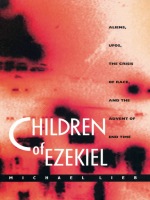 Children of Ezekiel: Aliens, UFOs, the Crisis of Race, and the Advent of End Time
Michael Lieb
Duke University Press, 1998 Are Milton’s Paradise Lost, Ronald Reagan’s “Star Wars” missile defense program, our culture’s fascination with UFOs and alien abductions, and Louis Farrakhan’s views on racial Armageddon somehow linked? In Children of Ezekiel Michael Lieb reveals the connections between these phenomena and the way culture has persistently related the divine to the technological. In a work of special interest at the approach of the millennium, Lieb traces these and other diverse cultural moments—all descended from the prophet Ezekiel’s vision of a fiery divine chariot in the sky—from antiquity to the present, across high and low culture, to reveal the pervasive impact of this visionary experience on the modern world.
Beginning with the merkabah chariot literature of Hebrew and Gnostic mysticism, Lieb shows how religiously inspired people concerned with annihilating their heretical enemies seized on Ezekiel’s vision as revealing the technologically superior instrument of God’s righteous anger. He describes how many who seek to know the unknowable that is the power of God conceive it in technological terms—and how that power is associated with political aims and a heralding of the end of time. For Milton, Ezekiel’s chariot becomes the vehicle in which the Son of God does battle with the rebellious angels. In the modern age, it may take the form of a locomotive, tank, airplane, missile, or UFO. Technology itself is seen as a divine gift and an embodiment of God in the temporal world. As Lieb demonstrates, the impetus to produce modern technology arises not merely from the desire for profit or military might but also from religious-spiritual motives.
Including discussions of conservative evangelical Christian movements, Reagan’s ballistic shooting gallery in the sky, and the Nation of Islam’s vision of the “mother plane” as the vehicle of retribution in the war against racial oppression, Children of Ezekiel will enthrall readers who have been captivated, either through religious belief or intellectual interests, by a common thread uniting millennial religious beliefs, racial conflict, and political and militaristic aspirations.
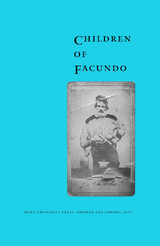 Children of Facundo: Caudillo and Gaucho Insurgency during the Argentine State-Formation Process (La Rioja, 1853-1870)
Ariel de la Fuente
Duke University Press, 2000 In Children of Facundo Ariel de la Fuente examines postindependence Argentinian instability and political struggle from the perspective of the rural lower classes. As the first comprehensive regional study to explore nineteenth-century society, culture, and politics in the Argentine interior—where more than 50 percent of the population lived at the time—the book departs from the predominant Buenos Aires-centered historiography to analyze this crucial period in the processes of state- and nation-building.
La Rioja, a province in the northwest section of the country, was the land of the caudillos immortalized by Domingo F. Sarmiento, particularly in his foundational and controversial book Facundo. De la Fuente focuses on the repeated rebellions in this district during the 1860s, when Federalist caudillos and their followers, the gauchos, rose up against the new Unitarian government. In this social and cultural analysis, de la Fuente argues that the conflict was not a factional struggle between two ideologically identical sectors of the elite, as commonly depicted. Instead, he believes, the struggle should be seen from the perspective of the lower-class gauchos, for whom Unitarianism and Federalism were highly differentiated party identities that represented different experiences during the nineteenth century. To reconstruct this rural political culture de la Fuente relies on sources that heretofore have been little used in the study of nineteenth-century Latin American politics, most notably a rich folklore collection of popular political songs, folktales, testimonies, and superstitions passed down by old gauchos who had been witnesses or protagonists of the rebellions. Criminal trial records, private diaries, and land censuses add to the originality of de la Fuente’s study, while also providing a new perspective on Sarmiento’s works, including the classic Facundo.
This book will interest those specializing in Latin American history, literature, politics, and rural issues.
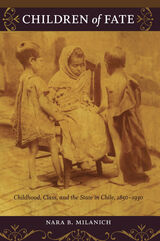 Children of Fate: Childhood, Class, and the State in Chile, 1850–1930
Nara B. Milanich
Duke University Press, 2009 In modern Latin America, profound social inequalities have persisted despite the promise of equality. Nara B. Milanich argues that social and legal practices surrounding family and kinship have helped produce and sustain these inequalities. Tracing families both elite and plebeian in late-nineteenth- and early-twentieth-century Chile, she focuses on a group largely invisible in Latin American historiography: children. The concept of family constituted a crucial dimension of an individual’s identity and status, but also denoted a privileged set of gendered and generational dependencies that not all people could claim. Children of Fate explores such themes as paternity, illegitimacy, kinship, and child circulation over the course of eighty years of Chile’s modern history to illuminate the ways family practices and ideologies powerfully shaped the lives of individuals as well as broader social structures. Milanich pays particular attention to family law, arguing that liberal legal reforms wrought in the 1850s, which left the paternity of illegitimate children purposely unrecorded, reinforced not only patriarchal power but also hierarchies of class. Through vivid stories culled from judicial and notarial sources and from a cache of documents found in the closet of a Santiago orphanage, she reveals how law and bureaucracy helped create an anonymous underclass bereft of kin entitlements, dependent on the charity of others, and marginalized from public bureaucracies. Milanich also challenges the recent scholarly emphasis on state formation by highlighting the enduring importance of private, informal, and extralegal relations of power within and across households. Children of Fate demonstrates how the study of children can illuminate the social organization of gender and class, liberalism, law, and state power in modern Latin America.
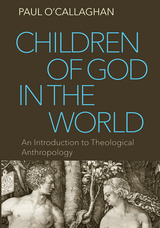 Children of God in the World
Paul O'Callaghan
Catholic University of America Press, 2016 Children of God in the World is a textbook of theological anthropology structured in four parts. The first attempts to clarify the relationship between theology, philosophy and science in their respective approaches to anthropology, and establishes the fundamental principle of the text, stated in Vatican II's Gaudium et spes, n. 22, "Christ manifests man to man." The second part provides a historical overview of the doctrine of grace: in Scripture (especially the teaching of the book of Genesis on humans 'made in the image of God', as well as Paul and John), among the Fathers (in particular the oriental doctrine of 'divinization' and Augustine), during the Middle Ages (especially Thomas Aquinas) and the Reformation period (centered particularly on Luther and the Council of Trent), right up to modern times. The third part of the text, the central one, provides a systematic understanding of Christian grace in terms of the God's life present in human believers by which they become children of God, disciples, friends and brothers of Christ, temples of the Holy Spirit. This section also provides a reflection on the theological virtues (faith, hope and charity), on the relationship between grace and human freedom, on the role of the Church and Christian apostolate in the communication of grace, and on the need humans have for divine grace. After considering the relationship between the natural and the supernatural order, the fourth and last part deals with different philosophical aspects of the human condition, in the light of Christian faith: the union between body and soul, humans as free, historical, social, sexual and working beings. The last chapter concludes with a consideration of the human person, Christianity's greatest and most enduring contribution to human thought.
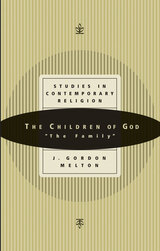 The Children of God: "The Family": Studies in Contemporary Religions
J. Gordon Melton
Signature Books, 1997 The Children of God emerged out of the hippie movement of the 1960s, and through the 1980s they came to blend Christianity with sexual freedom, communal living, and a rejection of materialism and “the system.” The Children, or “the Family” as they are now called, modified their behavior in the 1990s in the wake of several child sexual abuse charges (all dismissed) and the need for direction among the rising generation of Family members. They continue to live communally, proselytize full-time (none hold traditional jobs) and engage in sexual “sharing.” As a byproduct of their evangelism, they have produced a number of accomplished musicians. They receive guidance for their daily lives through periodic revelations passed to them by the Family’s current leader, Maria (the founder’s widow), and her associates. Despite their variance from traditional Christian beliefs and practices, their recent attempts to conform to some degree with cultural norms in whatever country they work has tempered criticism, and they continue as the most successful communal movement of an almost forgotten hippie world.
Children of Heracles. Hippolytus. Andromache. Hecuba
Euripides
Harvard University Press, 1995 Four plays by ancient Greece’s third great tragedian.
One of antiquity's greatest poets, Euripides has been prized in every age for the pathos, terror, and intellectual probing of his dramatic creations. The new Loeb Classical Library edition of his plays is in six volumes.
Volume II contains Children of Heracles, about Athens' protection of the dead hero's children; Hippolytus, which tells of the punishment Aphrodite inflicts on a man who refuses to worship her; Andromache and Hecuba, the tragic stories of two noble Trojan women after their city's fall.
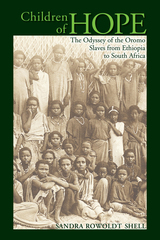 Children of Hope: The Odyssey of the Oromo Slaves from Ethiopia to South Africa
Sandra Rowoldt Shell
Ohio University Press, 2018 In Children of Hope, Sandra Rowoldt Shell traces the lives of sixty-four Oromo children who were enslaved in Ethiopia in the late-nineteenth century, liberated by the British navy, and ultimately sent to Lovedale Institution, a Free Church of Scotland mission in the Eastern Cape, South Africa, for their safety. Because Scottish missionaries in Yemen interviewed each of the Oromo children shortly after their liberation, we have sixty-four structured life histories told by the children themselves. In the historiography of slavery and the slave trade, first passage narratives are rare, groups of such narratives even more so. In this analytical group biography (or prosopography), Shell renders the experiences of the captives in detail and context that are all the more affecting for their dispassionate presentation. Comparing the children by gender, age, place of origin, method of capture, identity, and other characteristics, Shell enables new insights unlike anything in the existing literature for this region and period. Children of Hope is supplemented by graphs, maps, and illustrations that carefully detail the demographic and geographic layers of the children’s origins and lives after capture. In this way, Shell honors the individual stories of each child while also placing them into invaluable and multifaceted contexts.
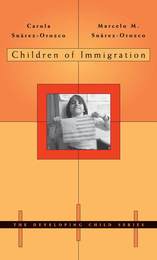 Children of Immigration
Carola Suárez-Orozco and Marcelo M. Suárez-Orozco
Harvard University Press, 2001 Now in the midst of the largest wave of immigration in history, America, mythical land of immigrants, is once again contemplating a future in which new arrivals will play a crucial role in reworking the fabric of the nation. At the center of this prospect are the children of immigrants, who make up one fifth of America's youth. This book, written by the codirectors of the largest ongoing longitudinal study of immigrant children and their families, offers a clear, broad, interdisciplinary view of who these children are and what their future might hold.
For immigrant children, the authors write, it is the best of times and the worst. These children are more likely than any previous generation of immigrants to end up in Ivy League universities--or unschooled, on parole, or in prison. Most arrive as motivated students, respectful of authority and quick to learn English. Yet, at the same time, many face huge obstacles to success, such as poverty, prejudice, the trauma of immigration itself, and exposure to the materialistic, hedonistic world of their native-born peers.
The authors vividly describe how forces within and outside the family shape these children's developing sense of identity and their ambivalent relationship with their adopted country. Their book demonstrates how "Americanization," long an immigrant ideal, has, in a nation so diverse and full of contradictions, become ever harder to define, let alone achieve.
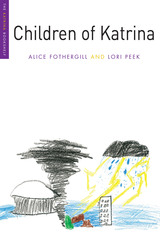 Children of Katrina
By Alice Fothergill and Lori Peek
University of Texas Press, 2015 Winner, Betty and Alfred McClung Lee Book Award, Association for Humanist Sociology, 2016
Outstanding Scholarly Contribution Award of the Section on Children and Youth, American Sociological Association, 2016
Honorable Mention, Leo Goodman Award, Methodology Section, American Sociological Association, 2016 When children experience upheaval and trauma, adults often view them as either vulnerable and helpless or as resilient and able to easily “bounce back.” But the reality is far more complex for the children and youth whose lives are suddenly upended by disaster. How are children actually affected by catastrophic events and how do they cope with the damage and disruption? Children of Katrina offers one of the only long-term, multiyear studies of young people following disaster. Sociologists Alice Fothergill and Lori Peek spent seven years after Hurricane Katrina interviewing and observing several hundred children and their family members, friends, neighbors, teachers, and other caregivers. In this book, they focus intimately on seven children between the ages of three and eighteen, selected because they exemplify the varied experiences of the larger group. They find that children followed three different post-disaster trajectories—declining, finding equilibrium, and fluctuating—as they tried to regain stability. The children’s moving stories illuminate how a devastating disaster affects individual health and well-being, family situations, housing and neighborhood contexts, schooling, peer relationships, and extracurricular activities. This work also demonstrates how outcomes were often worse for children who were vulnerable and living in crisis before the storm. Fothergill and Peek clarify what kinds of assistance children need during emergency response and recovery periods, as well as the individual, familial, social, and structural factors that aid or hinder children in getting that support.
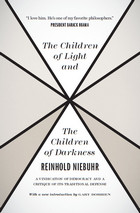 The Children of Light and the Children of Darkness: A Vindication of Democracy and a Critique of Its Traditional Defense
Reinhold Niebuhr
University of Chicago Press, 2011 The Children of Light and the Children of Darkness, first published in 1944, is considered one of the most profound and relevant works by the influential theologian Reinhold Niebuhr, and certainly the fullest statement of his political philosophy. Written and first read during the prolonged, tragic world war between totalitarian and democratic forces, Niebuhr’s book took up the timely question of how democracy as a political system could best be defended.
Most proponents of democracy, Niebuhr claimed, were “children of light,” who had optimistic but naïve ideas about how society could be rid of evil and governed by enlightened reason. They needed, he believed, to absorb some of the wisdom and strength of the “children of darkness,” whose ruthless cynicism and corrupt, anti-democratic politics should otherwise be repudiated. He argued for a prudent, liberal understanding of human society that took the measure of every group’s self-interest and was chastened by a realistic understanding of the limits of power. It is in the foreword to this book that he wrote, “Man’s capacity for justice makes democracy possible; but man’s inclination to injustice makes democracy necessary.” This edition includes a new introduction by the theologian and Niebuhr scholar Gary Dorrien in which he elucidates the work’s significance and places it firmly into the arc of Niebuhr’s career.
Children of Other Worlds: Exploitation in the Global Market
Jeremy Seabrook
Pluto Press, 2001 More than 40,000 children die daily in the developing world from avoidable sickness and disease. Tens of millions of children labour in mines, mills and sweatshops, or scavenge for a living on city streets and dumps. In the so-called developed world, children's lives are similarly blighted by drugs, alcohol, sexual abuse and violence.
Children Of Paradise
Liz Rosenberg
University of Pittsburgh Press, 1994 A book of poems about “children” in the widest sense--from children of the Nazi-torn Warsaw ghettos to the American poor, as well as poems of domesticity, love, and daily life.
 Children of Social Worlds: Development in a Social Context
Martin Richards
Harvard University Press, 1986 Researchers in child development often study children in isolation--apart from the environmental influences that shape, nurture, or harm them. In Children of Social Worlds, leading social scientists show how much is lost by this approach. Their underlying assumption is that children's psychological development can be understood only in the context of the social worlds in which they grow up and that the disciplinary boundaries of traditional psychology must be expanded. This book offers insights from scholars in a variety of disciplines--anthropology, education, linguistics, economics, medicine, and law, in addition to psychology. The result is a wide-angle perspective on child development based on some of the best research in the field.
The authors look particularly at broad trends and patterns, addressing such issues as the effect of institutions on family life, the changing roles of parents, cross-generational effects on development, the status of children in the legal system, schooling and learning, gender differences, the acquisition of communication skills, and the psychological impact of the nuclear threat. Chapters on cultural and historical definitions of the family add depth to their argument. Included, too, are discussions of emotional development and psychoanalytic theory, topics that are receiving increasing attention. The authors also reflect on the directions that research is likely to take in the future.
This well-balanced, closely integrated volume is full of innovative ideas and is written in a style that will be accessible to both specialists and students. As an incisive and informed evaluation of the field, it is sure to become an essential resource for psychologists, social workers, psychotherapists, social policy analysts--all who are concerned with human development in its social context.
Children of the Albatross
Anaïs Nin
Ohio University Press, 1959 Children of the Albatross is divided into two sections: “The Sealed Room” focuses on the dancer Djuna and a set of characters, chiefly male, who surround her; “The Café” brings together a cast of characters already familiar to Nin’s readers, but it is their meeting place that is the focal point of the story. As always, in Children of the Albatross, Nin’s writing is inseparable from her life. From Djuna’s story, told in “The Sealed Room” through hints and allusions, hazy in their details and chronology, the most important event to emerge is her father’s desertion (like Nin’s) when she was sixteen. By rejecting realistic writing for the experience and intuitions she drew from her diary, Nin was able to forge a novelistic style emphasizing free association, spontaneity, and improvisation, a technique that finds its parallel in the jazz music performed at the café where Nin’s characters meet.
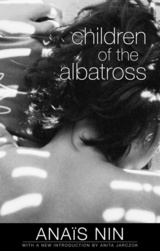 Children of the Albatross
Anaïs Nin
Ohio University Press, 2023 The second novel in Anaïs Nin’s Cities of the Interior series, Children of the Albatross is divided into two sections: “The Sealed Room” focuses on the dancer Djuna and a set of characters, chiefly male, who surround her; “The Café” brings together a cast of characters already familiar to Nin’s readers, but it is their meeting place that is the focal point of the story. As always, in Children of the Albatross, Nin’s writing is inseparable from her life. From Djuna’s story, told in “The Sealed Room” through hints and allusions, hazy in their details and chronology, the most important event to emerge is her father’s desertion (as Nin’s father did) when she was sixteen. By rejecting realistic writing for the experience and intuitions she drew from her diary, Nin was able to forge a novelistic style emphasizing free association, spontaneity, and improvisation, a technique that finds its parallel in the jazz music performed at the café where Nin’s characters meet.
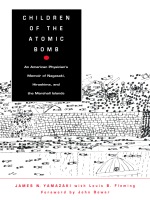 Children of the Atomic Bomb: An American Physician’s Memoir of Nagasaki, Hiroshima, and the Marshall Islands
James N. Yamazaki and Louis B. Fleming
Duke University Press, 1995 Despite familiar images of the dropping of the atomic bomb on Japan and the controversy over its fiftieth anniversary, the human impact of those horrific events often seems lost to view. In this uncommon memoir, Dr. James N. Yamazaki tells us in personal and moving terms of the human toll of nuclear warfare and the specific vulnerability of children to the effects of these weapons. Giving voice to the brutal ironies of racial and cultural conflict, of war and sacrifice, his story creates an inspiring and humbling portrait of events whose lessons remain difficult and troubling fifty years later.
Children of the Atomic Bomb is Dr. Yamazaki’s account of a lifelong effort to understand and document the impact of nuclear explosions on children, particularly the children conceived but not yet born at the time of the explosions. Assigned in 1949 as Physician-in-Charge of the United States Atomic Bomb Casualty Commission in Nagasaki, Yamazaki had served as a combat surgeon at the Battle of the Bulge where he had been captured and held as a prisoner of war by the Germans. In Japan he was confronted with violence of another dimension—the devastating impact of a nuclear blast and the particularly insidious effects of radiation on children.
Yamazaki’s story is also one of striking juxtapositions, an account of a Japanese-American’s encounter with racism, the story of a man who fought for his country while his parents were interned in a concentration camp in Arkansas. Once the object of discrimination at home, Yamazaki paradoxically found himself in Japan for the first time as an American, part of the Allied occupation forces, and again an outsider. This experience resonates through his work with the children of Nagasaki and Hiroshima and with the Marshallese people who bore the brunt of America’s postwar testing of nuclear weapons in the Pacific.
Recalling a career that has spanned five decades, Dr. Yamazaki chronicles the discoveries that helped chart the dangers of nuclear radiation and presents powerful observations of both the medical and social effects of the bomb. He offers an indelible picture of human tragedy, a tale of unimaginable suffering, and a dedication to healing that is ultimately an unwavering, impassioned plea for peace.
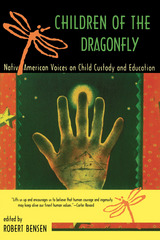 Children of the Dragonfly: Native American Voices on Child Custody and Education
Robert Bensen
University of Arizona Press, 2001 Sometimes the losses of childhood can be recovered only in the flight of the dragonfly.
Native American children have long been subject to removal from their homes for placement in residential schools and, more recently, in foster or adoptive homes. The governments of both the United States and Canada, having reduced Native nations to the legal status of dependent children, historically have asserted a surrogate parentalism over Native children themselves.
Children of the Dragonfly is the first anthology to document this struggle for cultural survival on both sides of the U.S.-Canadian border. Through autobiography and interviews, fiction and traditional tales, official transcripts and poetry, these voices— Seneca, Cherokee, Mohawk, Navajo, and many others— weave powerful accounts of struggle and loss into a moving testimony to perseverance and survival. Invoking the dragonfly spirit of Zuni legend who helps children restore a way of life that has been taken from them, the anthology explores the breadth of the conflict about Native childhood.
Included are works of contemporary authors Sherman Alexie, Joy Harjo, Luci Tapahonso, and others; classic writers Zitkala-Sa and E. Pauline Johnson; and contributions from twenty important new writers as well. They take readers from the boarding school movement of the 1870s to the Sixties Scoop in Canada and the Indian Child Welfare Act of 1978 in the United States. They also spotlight the tragic consequences of racist practices such as the suppression of Indian identity in government schools and the campaign against Indian childbearing through involuntary sterilization.
CONTENTS
Part 1. Traditional Stories and Lives
Severt Young Bear (Lakota) and R. D. Theisz, To Say "Child"
Zitkala-Sa (Yankton Sioux), The Toad and the Boy
Delia Oshogay (Chippewa), Oshkikwe's Baby
Michele Dean Stock (Seneca), The Seven Dancers
Mary Ulmer Chiltoskey (Cherokee), Goldilocks Thereafter
Marietta Brady (Navajo), Two Stories
Part 2. Boarding and Residential Schools
Embe (Marianna Burgess), from Stiya: or, a Carlisle Indian Girl at Home
Black Bear (Blackfeet), Who Am I?
E. Pauline Johnson (Mohawk), As It Was in the Beginning
Lee Maracle (Stoh:lo), Black Robes
Gordon D. Henry, Jr. (White Earth Chippewa), The Prisoner of Haiku
Luci Tapahonso (Navajo), The Snakeman
Joy Harjo (Muskogee), The Woman Who Fell from the Sky
Part 3. Child Welfare and Health Services
Problems That American Indian Families Face in Raising Their Children, United States Senate, April 8 and 9, 1974
Mary TallMountain (Athabaskan), Five Poems
Virginia Woolfclan, Missing Sister
Lela Northcross Wakely (Potawatomi/Kickapoo), Indian Health
Sherman Alexie (Spokane/Coeur d'Alene), from Indian Killer
Milton Lee (Cheyenne River Sioux) and Jamie Lee, The Search for Indian
Part 4. Children of the Dragonfly
Peter Cuch (Ute), I Wonder What the Car Looked Like
S. L. Wilde (Anishnaabe), A Letter to My Grandmother
Eric Gansworth (Onondaga), It Goes Something Like This
Kimberly Roppolo (Cherokee/Choctaw/Creek), Breeds and Outlaws
Phil Young (Cherokee) and Robert Bensen, Wetumka
Lawrence Sampson (Delaware/Eastern Band Cherokee), The Long Road Home
Beverley McKiver (Ojibway), When the Heron Speaks
Joyce carlEtta Mandrake (White Earth Chippewa), Memory Lane Is the Next Street Over
Alan Michelson (Mohawk), Lost Tribe
Patricia Aqiimuk Paul (Inupiaq), The Connection
Terry Trevor (Cherokee/Delaware/Seneca), Pushing up the Sky
Annalee Lucia Bensen (Mohegan/Cherokee), Two Dragonfly Dream Songs
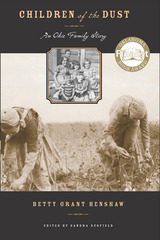 Children of the Dust: An Okie Family Story
Betty Grant Henshaw; edited by Sandra Scofield, with introduction by Victoria Smith
Texas Tech University Press, 2006 Betty Grant Henshaw was born into a large family of tenant farmers in Oklahoma during the Dust Bowl era. For years her father, Bill, worked himself to exhaustion, trying to earn enough to provide for his wife and nine children and to buy his own small farm, but he was never able to get ahead. Other family members had joined the great migration of Okies to California. Finally yielding to pressure from others, with some reluctance Bill piled his family in the Ford pickup and set off along Route 66 for the Golden State.There the family found abundant opportunities to work, but work often meant back-breaking labor in the fields for dirt-cheap wages in hundred-degree heat. Bill did his best to shield his family from the brutality of the fields. His abiding respect for work, which he cultivated in his children, led his family through difficult times. In the end, although he missed Oklahoma, Bill was proud to find that the Grants could thrive in any soil.
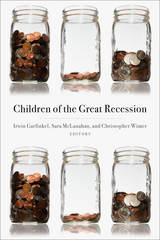 Children of the Great Recession
Irwin Garfinkel
Russell Sage Foundation, 2016 Many working families continue to struggle in the aftermath of the Great Recession, the deepest and longest economic downturn since the Great Depression. In Children of the Great Recession, a group of leading scholars draw from a unique study of nearly 5,000 economically and ethnically diverse families in twenty cities to analyze the effects of the Great Recession on parents and young children. By exploring the discrepancies in outcomes between these families—particularly between those headed by parents with college degrees and those without—this timely book shows how the most disadvantaged families have continued to suffer as a result of the Great Recession.
Several contributors examine the recession’s impact on the economic well-being of families, including changes to income, poverty levels, and economic insecurity. Irwin Garfinkel and Natasha Pilkauskas find that in cities with high unemployment rates during the recession, incomes for families with a college-educated mother fell by only about 5 percent, whereas families without college degrees experienced income losses three to four times greater. Garfinkel and Pilkauskas also show that the number of non-college-educated families enrolled in federal safety net programs—including Medicaid, the Earned Income Tax Credit, and the Supplemental Nutrition Assistance Program (or food stamps)—grew rapidly in response to the Great Recession.
Other researchers examine how parents’ physical and emotional health, relationship stability, and parenting behavior changed over the course of the recession. Janet Currie and Valentina Duque find that while mothers and fathers across all education groups experienced more health problems as a result of the downturn, health disparities by education widened. Daniel Schneider, Sara McLanahan and Kristin Harknett find decreases in marriage and cohabitation rates among less-educated families, and Ronald Mincy and Elia de la Cruz-Toledo show that as unemployment rates increased, nonresident fathers’ child support payments decreased. William Schneider, Jeanne Brooks-Gunn, and Jane Waldfogel show that fluctuations in unemployment rates negatively affected parenting quality and child well-being, particularly for families where the mother did not have a four-year college degree.
Although the recession affected most Americans, Children of the Great Recession reveals how vulnerable parents and children paid a higher price. The research in this volume suggests that policies that boost college access and reinforce the safety net could help protect disadvantaged families in times of economic crisis.
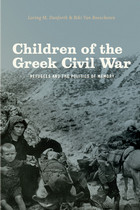 Children of the Greek Civil War: Refugees and the Politics of Memory
Loring M. Danforth and Riki Van Boeschoten
University of Chicago Press, 2011 At the height of the Greek Civil War in 1948, thirty-eight thousand children were evacuated from their homes in the mountains of northern Greece. The Greek Communist Party relocated half of them to orphanages in Eastern Europe, while their adversaries in the national government placed the rest in children’s homes elsewhere in Greece. A point of contention during the Cold War, this controversial episode continues to fuel tensions between Greeks and Macedonians and within Greek society itself. Loring M. Danforth and Riki Van Boeschoten present here for the first time a comprehensive study of the two evacuation programs and the lives of the children they forever transformed.
Marshalling archival records, oral histories, and ethnographic fieldwork, the authors analyze the evacuation process, the political conflict surrounding it, the children’s upbringing, and their fates as adults cut off from their parents and their homeland. They also give voice to seven refugee children who poignantly recount their childhood experiences and heroic efforts to construct new lives in diaspora communities throughout the world. A much-needed corrective to previous historical accounts, Children of the Greek Civil War is also a searching examination of the enduring effects of displacement on the lives of refugee children.
Children of the Holocaust
Arnost Lustig
Northwestern University Press, 1995 Children of the Holocaust is a landmark of Holocaust literature and among the finest works produced since World War II. These profoundly moving stories transcend the gruesome realities of the camps; their strength is that of the human spirit, the individual's ability to achieve moral triumph through action. This volume contains sixteen short stories and the novel Darkness Casts No Shadow.
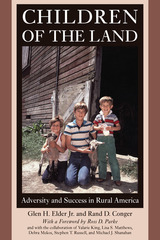 Children of the Land: Adversity and Success in Rural America
Glen H. Elder Jr. and Rand D. Conger
University of Chicago Press, 2000 A century ago, most Americans had ties to the land. Now only one in fifty is engaged in farming and little more than a fourth live in rural communities. Though not new, this exodus from the land represents one of the great social movements of our age and is also symptomatic of an unparalleled transformation of our society.
In Children of the Land, the authors ask whether traditional observations about farm families—strong intergenerational ties, productive roles for youth in work and social leadership, dedicated parents and a network of positive engagement in church, school, and community life—apply to three hundred Iowa children who have grown up with some tie to the land. The answer, as this study shows, is a resounding yes. In spite of the hardships they faced during the agricultural crisis of the 1980s, these children, whose lives we follow from the seventh grade to after high school graduation, proved to be remarkably successful, both academically and socially.
A moving testament to the distinctly positive lifestyle of Iowa families with connections to the land, this uplifting book also suggests important routes to success for youths in other high risk settings.
 Children of the Mire: Modern Poetry from Romanticism to the Avant-Garde, New and Enlarged Edition
Octavio Paz
Harvard University Press, 1991 “An instant classic.”—Calvin Bedient, New Republic
Mexico’s greatest modern poet reflects upon the twilight of modernity.
If Octavio Paz was “one of the greatest poets that the Spanish-language world has ever produced,” as Mario Vargas Llosa once said, he was also an astoundingly erudite critic. Here, in his 1971–1972 Norton Lectures, the Nobel laureate offers a potent and prescient diagnosis of the condition of poetry in the wake of literary modernism.
Poetry’s relationship with modernity, Paz argues, has always been tempestuous. If modern temporality posited the forward march of history toward the gates of a secular future, poetry is the “world of nonsequential time...a spiral sequence which turns ceaselessly without ever returning completely to its beginning.” And if modernity is the age of revolution, a negation of the past propelled by critical rationality, poetry chafes against the strictures of reason, aimlessly dwelling in dreams, eroticism, mythology, and other realms inaccessible to revolutionary fervor. Meanwhile, avant-garde attempts to embrace the “aesthetics of change” and recreate the revolutionary spirit in verse have exhausted themselves. What’s left, Paz maintains, is to return to the sinuous temporality of the poem itself, the irresolvable tension between the historical text and the abolition of history in the lyrical present.
Mapping the changing meanings of modernity across a wide range of poetic movements, from English and German Romanticism, French Surrealism, and Latin American modernismo to the avant-garde experiments of Vicente García-Huidobro, Children of the Mire is not only a dazzlingly cosmopolitan work of literary criticism. It is also a revealing portrait of the one of the defining voices of Latin American literature.
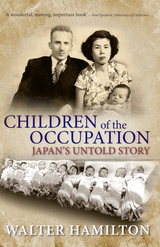 Children of the Occupation: Japan's Untold Story
Hamilton, Walter
Rutgers University Press, 2013 Following World War II, the Allied Powers occupied Japan from 1945 to 1952, leaving a human legacy: thousands of children of Japanese mothers fathered by men from Australia, the United States, New Zealand, India, and Britain. These mixed-race offspring, and often their mothers, faced intense discrimination.
Based on interviews with or research on 150 konketsuji—a now-taboo word for "mixed-blood" Japanese—journalist Walter Hamilton presents vivid first-person accounts of these adults as they remember their experiences of childhood loss. Using archival material from organizations dedicated to assisting the children, he combines moving personal tales with historical and political analyses of international race relations and immigration policy, particularly in North America and Australia.
Not only were attitudes and behaviors of the Japanese biased against the mixed-race children, but so were the restrictive and prejudicial immigration policies of the fathers’ native countries. Japan’s racial intolerance was fully matched in the nations it fought against. Hamilton examines how attitudes about race relations have evolved and traces the impact of racial ideology on national policy and cultural identity in Australia, Japan, and the United States.
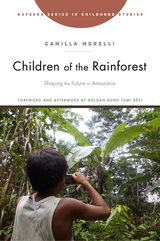 Children of the Rainforest: Shaping the Future in Amazonia
Camilla Morelli
Rutgers University Press, 2023 Children of the Rainforest explores the lives of children growing up in a time of radical change in Amazonia. The book draws on ethnographic fieldwork conducted with the Matses, a group of hunter-gatherer forest dwellers who have lived in voluntary isolation until fairly recently. Having worked with them for over a decade, returning every year to their villages in the rainforest, Camilla Morelli follows closely the life-trajectories of Matses children, watching them shift away from the forest-based lifestyles of their elders and move towards new horizons crisscrossed by concrete paving, lit by the glow of electric lights and television screens, and centered around urban practices and people. The book uses drawings and photographs taken by the children themselves to trace the children’s journeys—lived and imagined—from their own perspectives, proposing an ethnographic analysis that recognizes children’s imaginations, play, and shifting desires as powerful catalysts of social change.
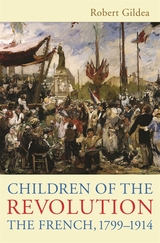 Children of the Revolution: The French, 1799-1914
Robert Gildea
Harvard University Press, 2008 For those who lived in the wake of the French Revolution, from the storming of the Bastille to Napoleon’s final defeat, its aftermath left a profound wound that no subsequent king, emperor, or president could heal. Children of the Revolution follows the ensuing generations who repeatedly tried and failed to come up with a stable regime after the trauma of 1789. The process encouraged fresh and often murderous oppositions between those who were for, and those who were against, the Revolution’s values. Bearing the scars of their country’s bloody struggle, and its legacy of deeply divided loyalties, the French lived the long nineteenth century in the shadow of the revolutionary age.
Despite the ghosts raised in this epic tale, Robert Gildea has written a richly engaging and provocative book. His is a strikingly unfamiliar France, a country with an often overwhelming gap between Paris and the provinces, a country torn apart by fratricidal hatreds and a tortured history of feminism, the site of political catastrophes and artistic triumphs, and a country that managed—despite a pervasive awareness of its own fall from grace—to fix itself squarely at the heart of modernity. Indeed, Gildea reveals how the collective recognition of the great costs of the Revolution galvanized the French to achieve consensus in a new republic and to integrate the tumultuous past into their sense of national identity. It was in this spirit that France’s young men went to the front in World War I with a powerful sense of national confidence and purpose.
Children of the Series and How They Grew: or A Century of Heroines & Heroes, Romantic, Comic, Moral
Faye Riter Kensinger
University of Wisconsin Press, 1987 Children’s series fiction comprises tales incorporating innocence and hard reality along with romance, wit, and character. Heavy streaks of morality diminished as the entertainment element increased. Heroes performed in a wide range of adventures, but restrictions often kept heroines close to home. Series fiction peaked, then waned, but such writers as Beverly Cleary and Madeleine L’Engle carried on the style.
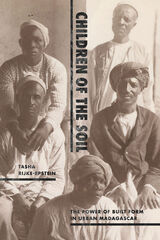 Children of the Soil: The Power of Built Form in Urban Madagascar
Tasha Rijke-Epstein
Duke University Press, 2023 In Children of the Soil, Tasha Rijke-Epstein offers an urban history of the port city of Mahajanga, Madagascar, before, during, and after colonization. Drawing on archival and ethnographic evidence, she weaves together the lives and afterlives of built spaces to show how city residents negotiated imperial encroachment, colonial rule, and global racial capitalism over two centuries. From Mahajanga’s hilltop palace to the alluvial depths of its cesspools, the city’s spaces were domains for ideological debates between rulers and subjects, French colonizers and indigenous Malagasy peoples, and Comorian migrants and Indian traders. In these spaces, Mahajanga’s residents expressed competing moral theories about power over people and the land. The built world was also where varying populations reckoned with human, ancestral, and ecological pasts and laid present and future claims to urban belonging. Migrants from nearby Comoros harnessed built forms as anticipatory devices through which they sought to build their presence into the landscape and transform themselves from outsiders into "children of the soil" (zanatany). In tracing the centrality of Mahajanga’s architecture to everyday life, Rijke-Epstein offers new ways to understand the relationships between the material world, the more-than-human realm, and the making of urban life.
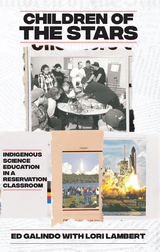 Children of the Stars: Indigenous Science Education in a Reservation Classroom
Ed Galindo
Oregon State University Press, 2022 In the 1990s, Ed Galindo, a high school science teacher on the Fort Hall Reservation in Idaho, took a team of Shoshone-Bannock students first to Johnson Space Center in Texas and then to Kennedy Space Center in Florida. These students had submitted a project to a competitive NASA program that was usually intended for college students—and they earned a spot to see NASA astronauts test out their experiment in space. The students designed and built the project themselves: a system to mix phosphate and water in space to create a fertilizer that would aid explorers in growing food on other planets.
In Children of the Stars, Galindo relates his experience with this first team and with successive student teams, who continued to participate in NASA programs over the course of a decade. He discusses the challenges of teaching American Indian students, from the practical limits of a rural reservation school to the importance of respecting and incorporating Indigenous knowledge systems. In describing how he had to earn the trust of his students to truly be successful as their teacher, Galindo also touches on the complexities of community belonging and understanding; although Indigenous himself, Galindo is not a member of the Shoshone-Bannock tribes and was still an outsider who had as much to learn as the students.
Children of the Stars is the story of students and a teacher, courage and hope. Written in a conversational style, it’s an accessible story about students who were supported and educated in culturally relevant ways and so overcame the limitations of an underfunded reservation school to reach great heights.
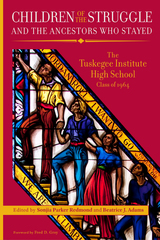 Children of the Struggle and the Ancestors Who Stayed: The Tuskegee Institute High School Class of 1964
Edited by Sonjia Parker Redmond and Beatrice J. Adams, Foreword by Fred D. Gray
University of Alabama Press, 2025 WINNER OF THE ANNE B. AND JAMES B. MCMILLAN PRIZE A powerful collection of firsthand stories from the Tuskegee Institute High School Class of 1964—students who came of age in the crucible of the Civil Rights Movement. Their stories uncover the bold choices of their ancestors who chose to stay and help shape the South. Children of the Struggle and the Ancestors Who Stayed, edited by Sonjia Parker Redmond and Beatrice J. Adams, brings together twenty-one deeply personal narratives from members of the Tuskegee Institute High School Class of 1964. These students grew up at the heart of the Civil Rights Movement, coming of age during landmark legal battles, community-led voter registration efforts, and the long shadow of Jim Crow. Graduating in the year of the Civil Rights Act and Freedom Summer, these young people had already helped desegregate Alabama schools. They marched from Selma to Montgomery, mourned the assassination of classmate Sammy Younge Jr., and witnessed firsthand the violent resistance to change that defined the era. Rather than join the Great Migration northward, many of them followed the lead of their ancestors and chose to stay—becoming educators, organizers, and civic leaders. Their lives reflect a powerful legacy of resistance and renewal, rooted in a deep sense of place and purpose. This collection preserves their voices and honors the generations of Black families who fought for justice not only through protest, but by staying, building, and believing in the promise of the South.
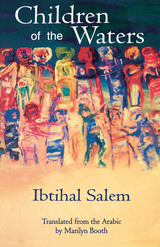 Children of the Waters
By Ibtihal Salem
University of Texas Press, 2002 Ibtihal Salem's writing provides an excellent forum for studying both everyday life in Egypt and current literary experimentation in the Middle East. Her poignant pieces hover between the structure of story-telling, the visuality of vignettes, and the compression of poetry. They both record and evoke a literary ferment going on in Egypt today. Salem's writing of the last thirty years is lauded for its social messages also. Finding the expression of sexuality necessary to explicate problems of Egyptian identity, Salem often links poverty to gender marginality. Her heroines, however, celebrate the heritages that have shaped them, even as they resist certain aspects of them. Like many writers in Egypt, Salem honors traditional folktales, even as she deals with contemporary problems from class and economic perspectives. Marilyn Booth, one of the best translators of Arabic fiction working today, has dealt in her introduction to this collection with the unusual experimental form by examining Salem's craft as well as the contextual history surrounding the stories. Since Salem is writing "across genres," Booth helps the reader also by opening each piece with an explanatory comment, often quoting the author, and thus further illuminating Salem's portrayals of lives bounded by Egypt's waters—the Canal, the Nile, and the Mediterranean.
 The Children of Time: Causality, Entropy, Becoming
Remy Lestienne
University of Illinois Press, 1995 "A work of scientific substance and critical wisdom, developed in
the urbane idiom of a French scholar." -- J. T. Fraser, founder,
International Society for the Study of Time
"This is the book for those of us who couldn't wade completely through
Hawking's A Brief History of Time and now have it collecting dust
on our bookshelves. Well written, thought-provoking, and, most important,
understandable." -- Michael Epstein, analytical spectroscopist/chemist,
National Institute of Standards and Technology
What is time? Does it really pass? These and other fascinating questions
about the nature of time animate a continuing philosophical and scientific
debate. In this popular French book, now available for the first time
in English; my Lestienne moves to make the bewildering concepts
of time accessible--and interesting. He uses Galileo, Newton, Einstein,
and others to demonstrate how the concepts of causality and entropy became
so pervasive that they eventually were substituted for time itself. He
also shows how recent advances in astronomy, particle physics, developmental
life sciences, and the neurosciences are helping to shape a new philosophical
vision of time.
Children of Zion
Henryk Grynberg
Northwestern University Press, 1997 In Children of Zion, Henryk Grynberg takes an extraordinary collection of interviews conducted by representatives of the Polish government-in-exile in Palestine in 1943 and arranges them in such a way that their voices become unforgettable. The interviewees--all Polish children--tell of their wartime experiences. Rather than using traditional form, Grynberg has turned their voices into a large "choral" group. The children recall their lives before the war (most were well off), their memories of the war's outbreak and the arrival of the Germans and Russians, and their experiences after leaving work camps and the ways many coped with their lives as orphans.
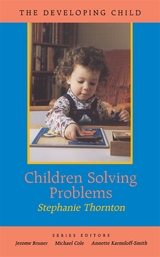 Children Solving Problems
Stephanie Thornton
Harvard University Press, 1995 A one-year-old attempting to build a tower of blocks may bring the pile crashing down, yet her five-year-old sister accomplishes this task with ease. Why do young children have difficulty with problems that present no real challenge to older children? How do problem-solving skills develop? In Children Solving Problems, Stephanie Thornton surveys recent research from a broad range of perspectives in order to explore this important question.
What Thornton finds may come as a surprise: successful problem-solving depends less on how smart we are—or, as the pioneering psychologist Jean Piaget claimed, how advanced our skill in logical reasoning is—and more on the factual knowledge we acquire as we learn and interpret cues from the world around us.
Problem-solving skills evolve through experience and dynamic interaction with a problem. But equally important—as the Russian psychologist L. S. Vygotsky proposed—is social interaction. Successful problem-solving is a social process. Sharing problem-solving tasks—with skilled adults and with other children—is vital to a child’s growth in expertise and confidence. In problem-solving, confidence can be more important than skill.
In a real sense, problem-solving lies at the heart of what we mean by intelligence. The ability to identify a goal, to work out how to achieve it, and to carry out that plan is the essence of every intelligent activity. Could it be, Thornton suggests, that problem-solving processes provide the fundamental machinery for cognitive development? In Children Solving Problems she synthesizes the dramatic insights and findings of post-Piagetian research and sets the agenda for the next stage in understanding the varied phenomena of children’s problem-solving.
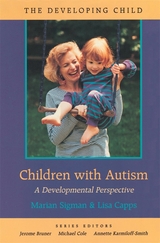 Children with Autism: A Developmental Perspective
Marian Sigman and Lisa Capps
Harvard University Press, 1997 A window on the insular world of autism, this book offers a rare close look at the mysterious condition that afflicts approximately 350,000 Americans and affects millions more. As they make sense of the many features of autism at every level of intellectual functioning across the life span, Marian Sigman and Lisa Capps weave together clinical vignettes, research findings, methodological considerations, and historical accounts. The result is a compelling, comprehensive view of the disorder, as true to human experience as it is to scientific observation.
Children with Autism is unique in that it views autism through the lens of developmental psychopathology, a discipline grounded in the belief that studies of normal and abnormal development can inform and enhance one another. Sigman and Capps conduct readers through the course of development from infancy to adulthood, outlining the differences between normal and autistic individuals at each stage and highlighting the links between growth in cognitive, social, and emotional domains. In particular, Sigman and Capps suggest that deficits in social understanding emerge in the early infancy of autistic children, and they explore how these deficits organize the development of autistic individuals through the course of their lives. They also examine the effects certain characteristics can have on an autistic person's adjustment over time. Their book concludes with an overview of existing interventions and promising avenues for further research.
Children with Enemies
Stuart Dischell
University of Chicago Press, 2017 There is a gentleness in the midst of savagery in Stuart Dischell’s fifth full-length collection of poetry. These poems are ever aware of the momentary grace of the present and the fleeting histories that precede the instants of time. Part elegist, part fabulist, part absurdist, Dischell writes at the edges of imagination, memory, and experience. By turns outwardly social and inwardly reflective, comic and remorseful, the beautifully crafted poems of Children with Enemies transfigure dread with a reluctant wisdom and come alive to the confusions and implications of what it means to be human.
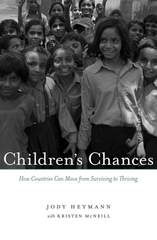 Children's Chances: How Countries Can Move from Surviving to Thriving
Jody Heymann
Harvard University Press, 2013 Most parents care deeply about their children. If that were enough, we would not see the inequalities we currently do in children’s opportunities and healthy development—children out of school, children laboring, children living in poverty. While the scale of the problems can seem overwhelming, history has shown that massive progress is possible on problems that once seemed unsolvable. Within the span of less than twenty-five years, the proportion of people living in extreme poverty has been cut in half, the number of children under age five that die each day has dropped by over 12,000, and the percentage of girls attending school has climbed from just three in four to over 90 percent.
National action, laws, and public policies fundamentally shape children’s opportunities. Children’s Chances urges a transformational shift from focusing solely on survival to targeting children’s full and healthy development. Drawing on never-before-available comparative data on laws and public policies in 190 countries, Jody Heymann and Kristen McNeill tell the story of what works and what countries around the world are doing to ensure equal opportunities for all children. Covering poverty, discrimination, education, health, child labor, child marriage, and parental care, Children’s Chances identifies the leaders and the laggards, highlights successes and setbacks, and provides a guide for what needs to be done to make equal chances for all children a reality.
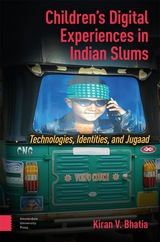 Children’s Digital Experiences in Indian Slums: Technologies, Identities, and Jugaad
Kiran Vinod Bhatia
Amsterdam University Press, 2024 Children’s Digital Experiences in Indian Slums departs from the universalising and rescue narratives of poor children and technologies. It offers complex stories on how children’s social identities (gender, caste, and religion), cultural norms, and personal aspirations influence their digital experiences. How do children challenge, circumvent, or reinforce the dominant sociocultural norms in their engagements with digital technologies? What can we learn about digital technologies and poor children’s jugaad and aspirations in the urban sprawls of India? I explore these questions ethnographically by focusing on how children in three urban slums in India access technologies, inhabit online spaces, and personalise their digital experiences, networks, and identity articulations based on their values and aspirations. I utilise insights from studies on jugaad, expression, and sociality to argue that poor children’s material realities, community relations, and aspirations for leisure, class mobility, and belongingness profoundly shape their engagements with digital technologies.
Children’s Dreaming and the Development of Consciousness
David Foulkes
Harvard University Press, 1999 David Foulkes is one of the international leaders in the empirical study of children’s dreaming, and a pioneer of sleep laboratory research with children. In this book, which distills a lifetime of study, Foulkes shows that dreaming as we normally understand it—active stories in which the dreamer is an actor—appears relatively late in childhood. This true dreaming begins between the ages of 7 and 9. He argues that this late development of dreaming suggests an equally late development of waking reflective self-awareness.
Foulkes offers a spirited defense of the independence of the psychological realm, and the legitimacy of studying it without either psychoanalytic over-interpretation or neurophysiological reductionism.
Children’s Experiences of Welfare in Modern Britain
Edited by Siân Pooley and Jonathan Taylor
University of London Press, 2021 The history of child welfare through the eyes of children themselves.
Children’s Experiences of Welfare in Modern Britain demonstrates how the young have been integral to the creation, delivery, and impact of welfare. The book brings together the very latest research on welfare as provided by the state, charities, and families in nineteenth- and twentieth-century Britain. The ten chapters consider a wide range of investments in young people’s lives, including residential institutions, Commonwealth emigration schemes, hospitals and clinics, schools, social housing, and familial care. Drawing upon thousands of personal testimonies and oral histories—including a wealth of writing by children themselves—the book shows that we can only understand the history and impact of welfare if we listen to children’s experiences.
Children's Folklore: A Source Book
Brian Sutton-Smith, Jay Mechling, Thomas W. Johnson, and Felicia R. McMahon
Utah State University Press, 1999 A collection of orginal essays by scholars from a variety of fields-- includng American studies, folklore, anthropology, pyschology, sociology, and education---Children's Folklore: A Source Book moves beyond traditional social-science views of child development. It reveals the complexity and artistry of interactions among children, challenging stereotypes of simple childhood innocence and conventional explanations of development that privilege sober and sensible adult outcomes. Instead, the play and lore of children is shown to be often disruptive, wayward, and irrational.
 Children’s Friendships
Zick Rubin
Harvard University Press, 1980 Anyone who knows children understands the importance of their relationships with one another. But until recently, psychology has offered little to illuminate children's friendships, assuming Instead that development is largely determined by the relationship between parent and child. Now, however, a new psychology of the child's social world has begun to take shape. Zick Rubin's book provides a graceful introduction to this work, written in the clear, nontechnical style that readers have come to expect of the Developing Child series.
Children's Friendships covers such questions as how friendship develops out of the simple play among young toddlers, how the child's conception of friendship changes with increasing cognitive sophistication, how individuals become popular or unpopular and how each affects them, why children form cliques, adopt stereotypes, follow fads, and (almost universally) exclude members of the opposite sex in the years just before puberty. The author's answers to these and other questions may surprise even the most experienced child-watcher.
Whether we like it or not, children learn a great deal—both cognitively and emotionally—from one another. Children's Friendships provides important insight into this kind of learning that all interested adults will find extremely valuable.
The Children's God
David Heller
University of Chicago Press, 1986 How do children imagine God? Surprisingly, few researchers have asked this question. In crayon drawings, doll-play, letters, and carefully designed interviews, the forty children in David Heller's study reveal a rich array of spiritual imagery. Though Heller does find some differing views attributable to age, gender, and religious background (the children were Jewish, Catholic, Protestant, and Hindu), he discovers to a surprising degree a common vision of God that cuts across ethnic and religious differences. He also considers related issues of school prayer and the psychology of religion.
A Children's Haggadah
Rabbi Howard Bogot
Central Conference of American Rabbis, 1996 This unique Haggadah, designed especially for young people, is a delightful asset for any seder table: home, religious schools, or community centers. Through special foods, prayers, and songs, children come to a personalized understanding of the miraculous event that is the Exodus. The beautiful, original illustrations render the text a meaningful work of art for all those who read it. This 8-1/2" x 11" volume includes art on every page and a vibrant accordion fold-out of the seder plate.
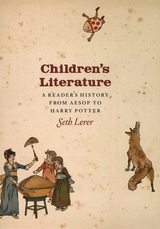 Children's Literature: A Reader's History, from Aesop to Harry Potter
Seth Lerer
University of Chicago Press, 2008 Ever since children have learned to read, there has been children’s literature. Children’s Literature charts the makings of the Western literary imagination from Aesop’s fables to Mother Goose, from Alice's Adventures in Wonderland to Peter Pan, from Where the Wild Things Are to Harry Potter. The only single-volume work to capture the rich and diverse history of children’s literature in its full panorama, this extraordinary book reveals why J. R. R. Tolkien, Dr. Seuss, Laura Ingalls Wilder, Beatrix Potter, and many others, despite their divergent styles and subject matter, have all resonated with generations of readers. Children’s Literature is an exhilarating quest across centuries, continents, and genres to discover how, and why, we first fall in love with the written word. “Lerer has accomplished something magical. Unlike the many handbooks to children’s literature that synopsize, evaluate, or otherwise guide adults in the selection of materials for children, this work presents a true critical history of the genre. . . . Scholarly, erudite, and all but exhaustive, it is also entertaining and accessible. Lerer takes his subject seriously without making it dull.”—Library Journal (starred review) “Lerer’s history reminds us of the wealth of literature written during the past 2,600 years. . . . With his vast and multidimensional knowledge of literature, he underscores the vital role it plays in forming a child’s imagination. We are made, he suggests, by the books we read.”—San Francisco Chronicle “There are dazzling chapters on John Locke and Empire, and nonsense, and Darwin, but Lerer’s most interesting chapter focuses on girls’ fiction. . . . A brilliant series of readings.”—Diane Purkiss, Times Literary Supplement
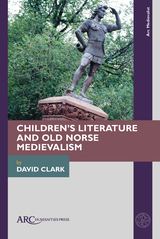 Children’s Literature and Old Norse Medievalism
David Clark
Arc Humanities Press, 2023 This book explores the ways in which contemporary authors respond to and rework key aspects of Old Norse history and viking culture for young twenty-first-century audiences. Why are contemporary authors and audiences so manifestly attracted to the viking past? In what ways do writers respond to Norse sources? How do the narratives they tell reflect our beliefs about and desires for the past, our constructions of childhood and adolescence, our anxieties around gender, sexuality, and ethnicity? How do these texts engage with a future occluded by apocalyptic ecological threat? David Clark explores these questions through readings of a rich body of diverse material which retells, updates, and transforms Norse culture. The volume contextualizes Norse medievalism and explores how thematic foci on gender, sexuality, disability, and ethnicity relate to contemporary concerns around these topics, and the construction of childhood.
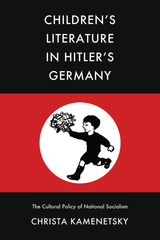 Children’s Literature in Hitler’s Germany: The Cultural Policy of National Socialism
Christa Kamenetsky
Ohio University Press, 1984 Between 1933 and 1945, National Socialists enacted a focused effort to propagandize children’s literature by distorting existing German values and traditions with the aim of creating a homogenous “folk community.” A vast censorship committee in Berlin oversaw the publication, revision, and distribution of books and textbooks for young readers, exercising its control over library and bookstore content as well as over new manuscripts, so as to redirect the cultural consumption of the nation’s children. In particular, the Nazis emphasized Nordic myths and legends with a focus on the fighting spirit of the saga heroes, their community loyalty, and a fierce spirit of revenge—elements that were then applied to the concepts of loyalty to and sacrifice for the Führer and the fatherland. They also tolerated select popular series, even though these were meant to be replaced by modern Hitler Youth camping stories. In this important book, first published in 1984 and now back in print, Christa Kamenetsky demonstrates how Nazis used children’s literature to selectively shape a “Nordic Germanic” worldview that was intended to strengthen the German folk community, the Führer, and the fatherland by imposing a racial perspective on mankind. Their efforts corroded the last remnants of the Weimar Republic’s liberal education, while promoting an enthusiastic following for Hitler.
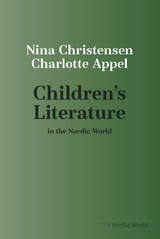 Children's Literature in the Nordic World
Charlotte Appel and NIna Christensen
University of Wisconsin Press, 2021 This volume introduces an international readership to the role books have played in the lives and upbringing of young people in the Nordic countries from the 1750s until today. Charlotte Appel and Nina Christensen look beyond an overview of noteworthy texts and characters to address the region’s distinctive reading cultures and the interactions between literature and changing views of childhood, with a special focus on Denmark.
The emergence of a dedicated market for children’s books in the Global North coincided with national school reforms, when Luther’s Small Catechism started to be supplemented—or replaced—by new books published for and about young readers, learners, and citizens. Children’s use of books and media is closely related to adults’ wishes to influence the present and future of a child through instruction, entertainment, or play. Chapters point to strong continuities as well as remarkable changes in the relationships between child readers and adult authors, artists, publishers, teachers, librarians, and parents through the centuries.
Focusing on children as the central users and producers of texts, this interdisciplinary and transnational history shows how children’s exposure to and use of media impacted the Nordic welfare state, and vice versa. As narratives for young audiences are continuously rewritten, republished, and adapted into new forms, this pithy synthesis brings forward new knowledge about the material and social history of books, literature, and childhood.
 Children's Mental Health: Problems and Services
A Report by the Office of Technology Assessment
Duke University Press, 1987 The important mental health problems of children have become the focus of increasing public awareness in the past few years. Adolescent suicide, the physical, emotional, and sexual abuse of children, alcohol and drug abuse by young people, as well as psychiatric hospitalization of children and adolescents have fueled a growing debate on mental illness and mental health services for our young children. This book was prepared by the Office of Technology Assessment at the request of Senators Mark Hatfield and Daniel Inouye. It acknowledges that there are no simple solutions to the problems we face or easy answers to questions concerning the best system of mental health service delivery. Yet Children's Mental Health makes it abundantly clear that there is a need for a mental health system response to these issues and that this response must be coordinated with other existing service systems. This book should be of value to concerned parents and community leaders, health system planners, and health care practitioners involved with both the needs of children and mental illness.
 The Children’s Republic of Gaudiopolis: The History and Memory of a Children’s Home for Holocaust and War Orphans (1945–1950)
Gergely Kunt
Central European University Press, 2022 Gaudiopolis (The City of Joy) was a pedagogical experiment that operated in a post–World War II orphanage in Budapest. This book tells the story of this children’s republic that sought to heal the wounds of wartime trauma, address prejudice and expose the children to a firsthand experience of democracy. The children were educated in freely voicing their opinions, questioning authority, and debating ideas. The account begins with the saving of hundreds of Jewish children during the Siege of Budapest by the Lutheran minister Gábor Sztehlo together with the International Red Cross. After describing the everyday life and practices of self-rule in the orphanage that emerged from this rescue operation, the book tells how the operation of the independent children’s home was stifled after the communist takeover and how Gaudiopolis was disbanded in 1950. The book then discusses how this attempt of democratization was erased from collective memory. The erasure began with the banning of a film inspired by Gaudiopolis. The Communist Party financed Somewhere in Europe in 1947 as propaganda about the construction of a new society, but the film’s director conveyed a message of democracy and tolerance instead of adhering to the tenets of socialist realism. The book breaks the subsequent silence on “The City of Joy,” which lasted until the fall of the Iron Curtain and beyond.
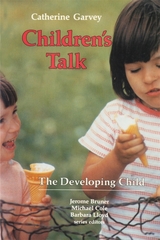 Children’s Talk
Catherine Garvey
Harvard University Press, 1984 How do children learn the intangible rules of conversation? How do they make talk “work”? Adults usually regard talk as a simple means of conveying information. Catherine Garvey’s examination of children’s talk reveals, however, that much more than this goes on in any conversational exchange.
Talk always takes place in a particular situation or context: the speakers are continuously interpreting what is going on, and they adjust their responses accordingly. To be sure that the message is received, children must learn to engage the attention of the other person, to take turns at talking, and to set up signals for the beginning and end of conversation. They learn to confirm that the intended meaning is understood and to evaluate the acceptability of the message, and they acquire an understanding of the ritual aspects of talk, including marks of courtesy such as “please” and “thank you,” displays of attentiveness, and an awareness of interpersonal status. Children must also learn to say “no,” to use talk to reach a goal, and to interpret the differences in the ways other people talk.
Garvey explains the importance of talk to children’s socialization and development and shows why talk is an integral and revealing part of the child’s life that reflects important changes in thinking and social interaction.
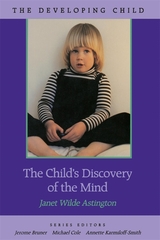 The Child’s Discovery of the Mind
Janet Astington
Harvard University Press, 1993 Three-year old Emily greets her grandfather at the front door: “We’re having a surprise party for your birthday! And it’s a secret!” We may smile at incidents like these, but they illustrate the beginning of an important transition in children’s lives—their development of a “theory of mind.” Emily certainly has some sense of her grandfather’s feelings, but she clearly doesn’t understand much about what he knows, and surprises—like secrets, tricks, and ties all depend on understanding and manipulating what others think and know.Jean Piaget investigated children’s discovery of the mind in the 1920s and concluded that they had little understanding before the age of six. But over the last twenty years, researchers have begun to challenge his methods and revise his conclusions. In The Child’s Discovery of the Mind, Janet Astington surveys this lively area of research in developmental psychology. Sometime between the ages of two and five, children begin to have insights into their own mental life and those of others. They begin to understand mental representation—that there is a difference between thoughts in the mind and things in the world, between thinking about eating a cookie and eating a cookie. This breakthrough reflects their emerging capacity to infer other people’s thoughts, wants, feelings, and perceptions from words and actions. They come to understand why people act the way they do and can predict how they will act in the future, so that by the age of five, they are knowing participants in social interaction. Astington highlights how crucial children’s discovery of the mind is in their social and intellectual development by including a chapter on autistic children, who fail to make this breakthrough.“Mind” is a cultural construct that children discover as they acquire the language and social practices of their culture, enabling them to make sense of the world. Astington provides a valuable overview of current research and of the consequences of this discovery for intellectual and social development.
The Child’s Path to Spoken Language
John L. Locke
Harvard University Press, 1993 Progressing gradually from babbling to meaningful sentences is something most babies do naturally. But why do they? John L. Locke’s answer constitutes a fascinating journey along the path of language development, a tour that takes in all the stops—neurological and perceptual, social and linguistic—that mark the way to intelligible speech. A major synthesis of the latest research on early language acquisition, this volume revises the way we understand ourselves and our approach to speech.
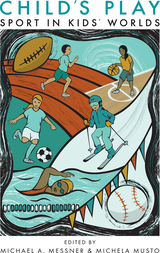 Child's Play: Sport in Kids' Worlds
Messner, Michael A
Rutgers University Press, 2016 Is sport good for kids? When answering this question, both critics and advocates of youth sports tend to fixate on matters of health, whether condemning contact sports for their concussion risk or prescribing athletics as a cure for the childhood obesity epidemic. Child’s Play presents a more nuanced examination of the issue, considering not only the physical impacts of youth athletics, but its psychological and social ramifications as well. The eleven original scholarly essays in this collection provide a probing look into how sports—in community athletic leagues, in schools, and even on television—play a major role in how young people view themselves, shape their identities, and imagine their place in society. Rather than focusing exclusively on self-proclaimed jocks, the book considers how the culture of sports affects a wide variety of children and young people, including those who opt out of athletics. Not only does Child’s Play examine disparities across lines of race, class, and gender, it also offers detailed examinations of how various minority populations, from transgender youth to Muslim immigrant girls, have participated in youth sports. Taken together, these essays offer a wide range of approaches to understanding the sociology of youth sports, including data-driven analyses that examine national trends, as well as ethnographic research that gives a voice to individual kids. Child’s Play thus presents a comprehensive and compelling analysis of how, for better and for worse, the culture of sports is integral to the development of young people—and with them, the future of our society.
The Child’s Understanding of Number
Rochel Gelman and C. R. Gallistel
Harvard University Press, 1986 The authors report the results of some half dozen years of research into when and how children acquire numerical skills. They provide a new set of answers to these questions, and overturn much of the traditional wisdom on the subject.
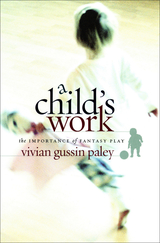 A Child's Work: The Importance of Fantasy Play
Vivian Gussin Paley
University of Chicago Press, 2004 The buzz word in education today is accountability. But the federal mandate of "no child left behind" has come to mean curriculums driven by preparation for standardized tests and quantifiable learning results. Even for very young children, unstructured creative time in the classroom is waning as teachers and administrators are under growing pressures to measure school readiness through rote learning and increased homework. In her new book, Vivian Gussin Paley decries this rapid disappearance of creative time and makes the case for the critical role of fantasy play in the psychological, intellectual, and social development of young children.
A Child's Work goes inside classrooms around the globe to explore the stunningly original language of children in their role-playing and storytelling. Drawing from their own words, Paley examines how this natural mode of learning allows children to construct meaning in their worlds, meaning that carries through into their adult lives. Proof that play is the work of children, this compelling and enchanting book will inspire and instruct teachers and parents as well as point to a fundamental misdirection in today's educational programs and strategies.
 Child-Sized History: Fictions of the Past in U.S. Classrooms
Sara L. Schwebel
Vanderbilt University Press, 2011 For more than three decades, the same children's historical novels have been taught across the United States. Honored for their literary quality and appreciated for their alignment with social studies curricula, the books have flourished as schools moved from whole-language to phonics and from student-centered learning to standardized testing. Books like Johnny Tremain, The Witch of Blackbird Pond, Island of the Blue Dolphins, and Roll of Thunder, Hear My Cry stimulate children's imagination, transporting them into the American past and projecting them into an American future. As works of historical interpretation, however, many are startlingly out of step with current historiography and social sensibilities, especially with regard to race. Unlike textbooks, which are replaced on regular cycles and subjected to public tugs-of-war between the left and right, historical novels have simply--and quietly--endured. Taken individually, many present troubling interpretations of the American past. But embraced collectively, this classroom canon provides a rare pedagogical opportunity: it captures a range of interpretive voices across time and place, a kind of "people's history" far removed from today's state-sanctioned textbooks. Teachers who employ historical novels in the classroom can help students recognize and interpret historical narrative as the product of research, analytical perspective, and the politics of the time. In doing so, they sensitize students to the ways in which the past is put to moral and ideological uses in the present. Featuring separate chapters on American Indians, war, and slavery, Child-Sized History tracks the changes in how young readers are taught to conceptualize history and the American nation.
Chile and the Inter-American Human Rights System
Edited by Karinna Fernández, Cristian Peña, and Sebastián Smart
University of London Press, 2017 This book reflects on the relationship between Chile and the Inter-American Human Rights System, focusing on an interdisciplinary and detailed examination of the consequences of recent cases decided by the Inter-American Court of Human Rights against the Chilean state. These cases illustrate central challenges in the areas of Lesbian, Gay, Bisexual, Transgender and Intersex rights, as well as shedding light on torture and indigenous rights in Chile and the Americas as a whole.
Chile: Political Economy of Urban Development
Edward L. Glaeser
Harvard University Press, 2002 Megacities such as Santiago are becoming a worldwide phenomenon. In six of eleven South American countries, over 25 percent of the population lives in a single city. What policies should national governments adopt with regard to dominant metropolises? Is it appropriate to restrict the flow of population to big cities? Or should governments take a laissez-faire attitude and permit city growth?
Focusing on Chile, this book argues that appropriate government action lies between these extremes. The authors espouse spatial policies that mitigate the social costs of congestion and pollution but also ensure that migrants pay the social costs of moving to big cities.
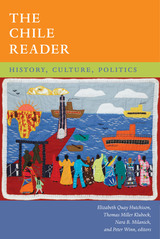 The Chile Reader: History, Culture, Politics
Elizabeth Quay Hutchison, Thomas Miller Klubock, Nara B. Milanich, and Peter Winn, eds.
Duke University Press, 2013 The Chile Reader makes available a rich variety of documents spanning more than five hundred years of Chilean history. Most of the selections are by Chileans; many have never before appeared in English. The history of Chile is rendered from diverse perspectives, including those of Mapuche Indians and Spanish colonists, peasants and aristocrats, feminists and military strongmen, entrepreneurs and workers, and priests and poets. Among the many selections are interviews, travel diaries, letters, diplomatic cables, cartoons, photographs, and song lyrics. Texts and images, each introduced by the editors, provide insights into the ways that Chile's unique geography has shaped its national identity, the country's unusually violent colonial history, and the stable but autocratic republic that emerged after independence from Spain. They shed light on Chile's role in the world economy, the social impact of economic modernization, and the enduring problems of deep inequality. The Reader also covers Chile's bold experiments with reform and revolution, its subsequent descent into one of Latin America's most ruthless Cold War dictatorships, and its much-admired transition to democracy and a market economy in the years since dictatorship.
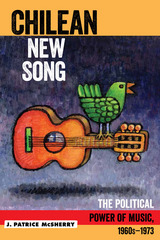 Chilean New Song: The Political Power of Music, 1960s - 1973
J Patrice McSherry
Temple University Press, 2015 Chilean New Song (la Nueva Canción chilena) entranced and uplifted a country that struggled for social change during the turbulent 1960s and early 1970s, until the 1973 coup that overthrew democratic socialist president Salvador Allende. This powerful musical style—with its poetic lyrics and haunting blend of traditional indigenous wind and stringed instruments—was born of and expressed the aspirations of rising classes. It promised a socially just future as it forged social bonding.
In Chilean New Song, J. Patrice McSherry deftly combines a political-historical view of Chile with a narrative of its cultural development. She examines the democratizing power of this music and, through interviews with key protagonists, the social roles of politically committed artists who participated in a movement for change. McSherry explores the impact of Chilean New Song and the way this artistic/cultural phenomenon related to contemporary politics to capture the passion, pain, and hope of millions of Chileans.
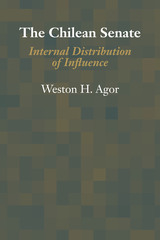 The Chilean Senate: Internal Distribution of Influence
By Weston H. Agor
University of Texas Press, 1971 Weston Agor’s carefully documented analysis of the organization and workings of the Chilean Senate is the first of its kind and fills a long-standing need in the comparative study of the internal structure of legislative bodies.
Making eclectic use of role, power, and exchange theories, Agor bases his discussion on personal interviews with senators and staff as well as on extensive observation of the Senate in action during 1967–1968. He also analyzes in detail relevant documents, committee reports, and floor debates. Focused primarily on the formal decision-making structure within the Senate and on internal norms, both formal and informal, that hold that structure together, Agor’s study fruitfully compares the Chilean Senate with its peers, including the United States Senate, to which it bears surprising resemblance in form and function.
Agor examines the role of compromise and informal rules of the game in achieving a majority vote in the Senate, the power of committees and committee presidents, and political party control over Senate members. The influence of the executive, particularly in the passage of executive legislation, and its effect on the Senate’s internal system of checks and balances—both stated and understood—are examined in terms of their effect on the political strength of the Senate.
The Chilean Senate, unlike its counterparts in most other “developing countries,” has exercised genuine and effective influence in the national political system. In an epilogue to this study, Agor views events since 1968, including the election of Allende, that affected the future role of the Senate in Chilean politics.
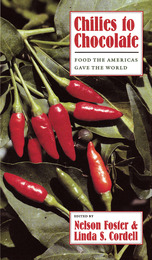 Chilies to Chocolate: Food the Americas Gave the World
Nelson Foster and Linda S. Cordell
University of Arizona Press, 1992 Columbus stumbled upon the New World while seeking the riches of the orient, yet native peoples of the Americas already held riches beyond his knowing. From maize to potatoes to native beans, a variety of crops unfamiliar to Europeans were cultivated by indigenous peoples of the Americas, with other foods like chilies and chocolate on hand to make diets all the more interesting (even when used in combination, as aficionados of molé will attest).
Chilies to Chocolate traces the biological and cultural history of some New World crops that have worldwide economic importance. Drawing on disciplines as diverse as anthropology, ethnobotany, and agronomy, it focuses on the domestication and use of these plants by native peoples and their dispersion into the fields and kitchens of the Old World: tomatoes to Italy, chili peppers throughout Asia, cacao wherever a sweet tooth craves chocolate. Indeed, potatoes and maize now rank with wheat and rice as the world's principal crops.
"The sweetness of corn on the cob is sweeter for knowing the long, winding way by which it has come into one's hands," observe Foster and Cordell. Featuring contributions by Gary Nabhan, Alan Davidson, and others, Chilies to Chocolate will increase readers' appreciation of the foods we all enjoy, of the circuitous routes by which they have become part of our diets, and of the vital role that Native Americans have played in this process.
Chilling Effect: A Lucinda Hayes Mystery
Marianne Wesson
University Press of Colorado, 2004 Equal parts courtroom drama, intellectual journey, and character study, Chilling Effect is Marianne Wesson's most provocative Lucinda Hayes mystery to date. When attorney Lucinda Hayes reluctantly agrees to represent the mother of a brutally slain child, she must convince the court that the makers of a pornographic film are liable for the murder. As the case unfolds, Lucinda calls upon all her personal strength and legal talent, facing down her own ghosts as well as the powerful entertainment industry's star lawyers. In Chilling Effect, Wesson affirms the power of free speech to inspire the best and the worst human behavior and explores the tension between freedom and accountability
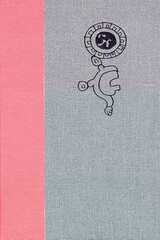 Chimalpahin and the Kingdoms of Chalco
Susan Schroeder
University of Arizona Press, 1991 "A thorough treatment of the sociopolitical history of the kingdoms of Chalco as seen through the eyes of one of the great post-Conquest Nahua historians. . . . Students of Nahuatl language will be rewarded by the extensive citations (with accompanying translations) of relevant material from original Nahua sources." —Choice
"By delineating the concepts and personae that were most salient in Chimalpahin's politically-oriented perspective on the past, Schroeder has advanced our understanding of native Mexican political organization and has made a major contribution toward interpreting the work of this Nahua historian." —Anthropos
"In this well-structured volume, Susan Schroeder synthesizes Chimalpahin's detailed information on the Prehispanic kingdoms of Chalco (located in the southern Valley of Mexico) with particular emphasis on their sociopolitical organization. . . . A valuable contribution." —American Antiquity
"This is an important piece of scholarship which makes more accessible to general historians of colonial Mexico an item of Nahuatl literature." —The Americas
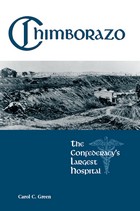 Chimborazo: The Confederacy's Largest Hospital
Carol C. Green
University of Tennessee Press, 2004 Chimborazo Hospital, just outside Richmond, Virginia, served as the Confederacy’s largest hospital for four years. During this time, it treated nearly eighty thousand patients, boasting a mortality rate of just over 11 percent. This book, the first full-length study of a facility that was vital to the Southern war effort, tells the story of those who lived and worked at Chimborazo.
Organized by Dr. James Brown McCaw, Chimborazo was an innovative hospital with well-trained physicians, efficient stewards, and a unique supply system. Physicians had access to the latest medical knowledge and specialists in Richmond. The hospital soon became a model for other facilities. The hospital’s clinical reputation grew as it established connections with the Medical College of Virginia and hosted several drug and treatment trials requested by the Confederate Medical Department.
In fascinating detail, Chimborazo recounts the issues, trials, and triumphs of a Civil War hospital. Based on an extensive study of hospital and Confederate Medical Department records found at the National Archives, along with other primary sources, the study includes information on the patients, hospital stewards, matrons, and slaves who served as support staff. Since Chimborazo was designated as an independent army post, the book discusses other features of its organization, staff, and supply system as well. This careful examination describes the challenges facing the hospital and reveals the humanity of those who lived and worked there.
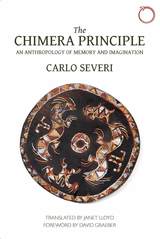 The Chimera Principle: An Anthropology of Memory and Imagination
Carlo Severi
HAU, 2015 Available in English for the first time, anthropologist Carlo Severi’s The Chimera Principle breaks new theoretical ground for the study of ritual, iconographic technologies, and oral traditions among non-literate peoples. Setting himself against a tradition that has long seen the memory of people “without writing”—which relies on such ephemeral records as ornaments, body painting, and masks—as fundamentally disordered or doomed to failure, he argues strenuously that ritual actions in these societies pragmatically produce religious meaning and that they demonstrate what he calls a “chimeric” imagination. Deploying philosophical and ethnographic theory, Severi unfolds new approaches to research in the anthropology of ritual and memory, ultimately building a new theory of imagination and an original anthropology of thought. This English-language edition, beautifully translated by Janet Lloyd and complete with a foreword by David Graeber, will spark widespread debate and be heralded as an instant classic for anthropologists, historians, and philosophers.
 Chimeras, Hybrids, and Interspecies Research: Politics and Policymaking
Andrea L. Bonnicksen
Georgetown University Press, 2009 In his 2006 State of the Union speech, President George W. Bush asked the U.S. Congress to prohibit the "most egregious abuses of medical research," such as the "creation of animal–human hybrids." The president's message echoed that of a 2004 report by the President's Council on Bioethics, which recommended that hybrid human–animal embryos be banned by Congress. Discussions of early interspecies research, in which cells or DNA are interchanged between humans and nonhumans at early stages of development, can often devolve into sweeping statements, colorful imagery, and confusing policy. Although today's policy advisory groups are becoming more informed, debate is still limited by the interchangeable use of terms such as chimeras and hybrids, a tendency to treat all forms of interspecies alike, the failure to distinguish between laboratory research and procreation, and not enough serious policy justification. Andrea Bonnicksen seeks to understand reasons behind support of and disdain for interspecies research in such areas as chimerism, hybridization, interspecies nuclear transfer, cross-species embryo transfer, and transgenics. She highlights two claims critics make against early interspecies studies: that the research will violate human dignity and that it can lead to procreation. Are these claims sufficient to justify restrictive policy? Bonnicksen carefully illustrates the challenges of making policy for sensitive and often sensationalized research—research that touches deep-seated values and that probes the boundary between human and nonhuman animals.
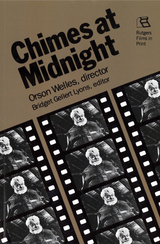 Chimes at Midnight: Orson Welles, Director
Lyons, Bridget G
Rutgers University Press, 1988 Among the films inspired by Orson Welles's lifelong involvement with Shakespeare, the greatest is Chimes at Midnight (1966). It is a masterly conflation of the Shakespearean history plays that feature Falstaff, the great comic figure played by Welles himself in the film. For Welles, the character was also potentially tragic: the doomed friendship between Falstaff and Prince Hal becomes an image of the end of an age. To this epic subject Welles brings the innovative film techniques that made him famous in Citizen Kane, The Lady from Shanghai,"and Touch of Evil.
This volume offers a complete continuity script of Chimes at Midnight, including its famous battle sequence. Each shot is described in detail and is keyed to the original Shakesperian sources, thus making the volume an invaluable guide to Welles as an adaptor and creator of texts. The first complete transcription of the continuity script of Chimes is accompanied by the editor's critical introduction on Welles's transformation of Shakespeare; a special interview with Keith Baxter, one of the film's principal actors, which discusses its production history; reviews and articles; and a biographical sketch of Welles, a filmography, and a bibliography.
 Chimpanzee and Red Colobus: The Ecology of Predator and Prey
Craig B. Stanford
Harvard University Press, 1998 Our closest living relatives, the chimpanzees, are familiar enough--bright and ornery and promiscuous. But they also kill and eat their kin, in this case the red colobus monkey, which may say something about primate--even hominid--evolution. This book, the first long-term field study of a predator-prey relationship involving two wild primates, documents a six-year investigation into how the risk of predation molds primate society. Taking us to Gombe National Park in Tanzania, a place made famous by Jane Goodall's studies, the book offers a close look at how predation by wild chimpanzees--observable in the park as nowhere else--has influenced the behavior, ecology, and demography of a population of red colobus monkeys.
As he explores the effects of chimpanzees' hunting, Craig Stanford also asks why these creatures prey on the red colobus. Because chimpanzees are often used as models of how early humans may have lived, Stanford's findings offer insight into the possible role of early hominids as predators, a little understood aspect of human evolution.
The first book-length study in a newly emerging genre of primate field study, Chimpanzee and Red Colobus expands our understanding of not just these two primate societies, but also the evolutionary ecology of predators and prey in general.
Chimpanzee Cultures
Richard W. Wrangham
Harvard University Press, 1994 Do chimpanzees have something akin to culture? Bringing together studies of behavioral variation within and among chimpanzees and bonobos --the sibling species of the genus Pan--this book provides the basis for answering this question. In Chimpanzee Cultures, the world's leading authorities on chimpanzees and bonobos chronicle the animals' behaviors from one study site to the next, in both captive and wild groups, in laboratory and field settings.
 Chimpanzees and Human Evolution
Martin N. Muller
Harvard University Press, 2017 Knowledge of chimpanzees in the wild has expanded dramatically in recent years. This comprehensive volume, edited by Martin Muller, Richard Wrangham, and David Pilbeam, brings together scientists who are leading a revolution to discover and explain what is unique about humans, by studying their closest living relatives. Their observations and conclusions have the potential to transform our understanding of human evolution.
Chimpanzees offer scientists an unmatched view of what distinguishes humanity from its apelike ancestors. Based on evidence from the hominin fossil record and extensive morphological, developmental, and genetic data, Chimpanzees and Human Evolution makes the case that the last common ancestor of chimpanzees and humans was chimpanzee-like. It most likely lived in African rainforests around eight million years ago, eating fruit and walking on its knuckles. Readers will learn why chimpanzees are a better model for the last common ancestor than bonobos, gorillas, or orangutans. A thorough chapter-by-chapter analysis reveals which key traits we share with chimpanzees and which appear to be distinctive to Homo sapiens, and shows how understanding chimpanzees helps us account for the evolution of human uniqueness. Traits surveyed include social behaviors and structures, mating systems, diet, hunting practices, tool use, culture, cognition, and communication.
Edited by three of primatology’s most renowned experts, with contributions from 32 scholars drawing on decades of field research, Chimpanzees and Human Evolution provides readers with detailed up-to-date information on what we can infer about our chimpanzee-like ancestors and points the way forward for the next generation of discoveries.
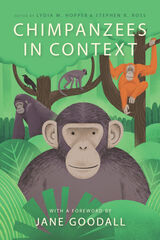 Chimpanzees in Context: A Comparative Perspective on Chimpanzee Behavior, Cognition, Conservation, and Welfare
Edited by Lydia M. Hopper and Stephen R. Ross
University of Chicago Press, 2020 The study of the chimpanzee, one of the human species’ closest relatives, has led scientists to exciting discoveries about evolution, behavior, and cognition over the past half century. In this book, rising and veteran scholars take a fascinating comparative approach to the culture, behavior, and cognition of both wild and captive chimpanzees. By seeking new perspectives in how the chimpanzee compares to other species, the scientists featured offer a richer understanding of the ways in which chimpanzees’ unique experiences shape their behavior. They also demonstrate how different methodologies provide different insights, how various cultural experiences influence our perspectives of chimpanzees, and how different ecologies in which chimpanzees live affect how they express themselves.
After a foreword by Jane Goodall, the book features sections that examine chimpanzee life histories and developmental milestones, behavior, methods of study, animal communication, cooperation, communication, and tool use. The book ends with chapters that consider how we can apply contemporary knowledge of chimpanzees to enhance their care and conservation. Collectively, these chapters remind us of the importance of considering the social, ecological, and cognitive context of chimpanzee behavior, and how these contexts shape our comprehension of chimpanzees. Only by leveraging these powerful perspectives do we stand a chance at improving how we understand, care for, and protect this species.
China: A New History
John King Fairbank
Harvard University Press, 1992 THIS EDITION HAS BEEN REPLACED BY A NEWER EDITION.
China: A New History, Second Enlarged Edition
John King Fairbank and Merle Goldman
Harvard University Press, 2006 John King Fairbank was the West's doyen on China, and this book is the full and final expression of his lifelong engagement with this vast ancient civilization. It remains a masterwork without parallel. The distinguished historian Merle Goldman brings the book up to date, covering reforms in the post-Mao period through the early years of the twenty-first century, including the leadership of Hu Jintao. She also provides an epilogue discussing the changes in contemporary China that will shape the nation in the years to come.
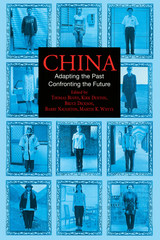 China: Adapting the Past, Confronting the Future
Thomas Buoye, Kirk Denton, Bruce Dickson, Barry Naughton, and Martin K. Whyte, Editors
University of Michigan Press, 2002 Completely updated, China: Adapting the Past, Confronting the Future is the latest in a series of classroom units on China from the Center of Chinese Studies at The University of Michigan. It is not only ideal for courses on contemporary China but also an excellent supplement for courses in area studies, international affairs and economics, and women's studies. Each section, in addition to essay and excerpts, also includes a bibliography of additional topical works as well as suggestions for complementary video and internet teaching resources. Geography and History: Presents a broad sketch of Chinese history from earliest times and a detailed discussion of the forces that have shaped modern Chinese history. Geography sharpens the focus to China’s rich ecological and ethnic diversity. Politics: Addresses political issues in post-Tiananmen China, including corruption, human rights, US-China relations, democratic reform, and religious and political dissidents. Society: Examines contemporary social problems that have emerged in the post-Mao era, including divorce, migrant labor, family planning, problems facing Chinese women, and the proliferation of Chinese and Western religions. Economy: Assesses the post-Mao economy after twenty years of experimentation and reform, including development of private enterprises, income disparities, case studies in rural and urban economic development, and the prospects for future growth. Culture: Reviews 20th century Chinese literature, the intersection between politics and the arts, the explosion of popular culture, and changing visual culture in modern China. Future Trends: Explores the prospects for democratization, generational change in leadership, the direction of modernization, and China’s prospects for political liberalization.
China: An Introduction to the Culture and People
Kai Strittmatter
Haus Publishing, 2010 It's time we got to know a little more about the Chinese. Did you know they don't eat soup, they drink it? That their surnames come before their first names? That their good sense is to be found not in their heads but in their hearts? Or that white is their colour of mourning? This guide to avoiding the numerous pitfalls of Chinese etiquette is both amusing and informative. The writer and journalist Kai Strittmatter lived and worked in China for ten years. This amusing, affectionate and perceptive book provides a fascinating guide to this lively, sociable and friendly people and their complex and often contradictory society. As the author says: "Be prepared for everything when you come to Beijing. It really is unbelievable what can happen here." The new material in this edition takes a critical look at the challenges posed by this, the next global superpower.
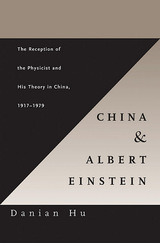 China and Albert Einstein: The Reception of the Physicist and His Theory in China, 1917–1979
Danian Hu
Harvard University Press, 2005 China and Albert Einstein is the first extensive study in English or Chinese of China’s reception of the celebrated physicist and his theory of relativity. Tracing the influence of Jesuit missionaries in the seventeenth century and Western missionaries and educators in the nineteenth and twentieth centuries, as they introduced key concepts of Western physical science and paved the way for Einstein’s radical new ideas, Danian Hu shows us that Chinese receptivity was fostered by the trickle of Chinese students sent abroad for study beginning in the mid-nineteenth century and by the openness of the May Fourth Movement (1916–1923).
In a series of biographical studies of Chinese physicists, Hu describes the Chinese assimilation of relativity and explains how Chinese physicists offered arguments and theories of their own. Hu’s account concludes with the troubling story of the fate of foreign ideas such as Einstein’s in the Chinese Cultural Revolution (1966–1976), when the theory of relativity was denigrated along with Einstein’s ideas on democracy and world peace.
China and Albert Einstein is an important contribution to Einstein studies and a landmark work in the history of Chinese science.
 China and Charles Darwin
James Reeve Pusey
Harvard University Press, 1983 Although Charles Darwin never visited China, his ideas landed there with force. Darwinism was the first great Western theory to make an impact on the Chinese and, from 1895 until at least 1921, when Marxism gained a formal foothold, it was the dominant Western “ism” influencing Chinese politics and thought. The authority of Darwin, sometimes misinterpreted, influenced reformers and revolutionaries and paved the way for Chinese Marxism and the thought of Mao Tse-tung.
This study evaluates Darwin’s theory of evolution as a stimulus to Chinese political changes and philosophic challenge to traditional Chinese beliefs. James Pusey bases his analysis on a survey of journals issued from 1896 to 1910 and, after a break for revolutionary action, from 1915 to 1926, with emphasis on the era between the Sino–Japanese War and the Republican Revolution. The story of Darwinism in China involves, among others, the most famous figures of modern Chinese intellectual history.
China and Great Britain: The Diplomacy of Commercial Relations, 1860–1864
Britten Dean
Harvard University Press, 1974 Based on unpublished as well as published Chinese and British archival materials, this book focuses on the negotiations for the implementation of the commercial provision of the Treaty of Tientsin. Topics studies in detail include the opening of the Yangtze River to trade, problems in the river trade, revisions of the river trade regulations, and the opening of the bean trade at the northern ports to British shipping. A concluding chapter places Sino-British commercial policies within the context of Britain's overall China policy and within China's overall foreign policy.
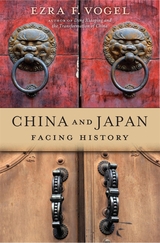 China and Japan: Facing History
Ezra F. Vogel
Harvard University Press, 2019 A Financial Times “Summer Books” Selection
“Will become required reading.”
—Times Literary Supplement
“Elegantly written…with a confidence that comes from decades of deep research on the topic, illustrating how influence and power have waxed and waned between the two countries.”
—Rana Mitter, Financial Times
China and Japan have cultural and political connections that stretch back fifteen hundred years, but today their relationship is strained. China’s military buildup deeply worries Japan, while Japan’s brutal occupation of China in World War II remains an open wound. In recent years both countries have insisted that the other side must openly address the flashpoints of the past before relations can improve.
Boldly tackling the most contentious chapters in this long and tangled relationship, Ezra Vogel uses the tools of a master historian to examine key turning points in Sino–Japanese history. Gracefully pivoting from past to present, he argues that for the sake of a stable world order, these two Asian giants must reset their relationship.
“A sweeping, often fascinating, account…Impressively researched and smoothly written.”
—Japan Times
“Vogel uses the powerful lens of the past to frame contemporary Chinese–Japanese relations…[He] suggests that over the centuries—across both the imperial and the modern eras—friction has always dominated their relations.”
—Sheila A. Smith, Foreign Affairs
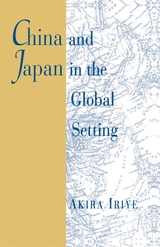 China and Japan in the Global Setting
Akira Iriye
Harvard University Press, 1992 The relationship between China and Japan remains among the most significant of all the world’s bilateral affairs—yet it is also the most tortured and the least understood. Akira Iriye adds brilliant clarity to the past century of Chinese–Japanese interactions in this masterful interpretive survey.
Placing the relationship within its global context, he outlines three distinct periods in the history of these Asian giants. From the 1880s to World War I, the two nations struggled for power. Armaments, war strategies, and security measures played pivotal roles, reflecting the importance 0f military calculations in a world dominated by Western governments.
In the second period, that between the two World Wars, Iriye illuminates the dominant role of culture and the stress on internationalism. China’s continuing literary influence, an exchange of ideas and students reforms such as Japan’s Taisho democracy and China’s May Fourth movement, and both nations’ bid for racial equality in the West profoundly affected these interwar years.
The third period reaches from the end of World War II through the present day, and is characterized by exchanges of an economic nature: trade, shipping, investment, and emigration. The author discusses the results of China’s civil war, the rise and decline 0f the Cold War in the West, and the cultural and ecological problems brought by Japan’s spiraling economic development. But economic ties remain deeply entwined with cultural concerns, and ultimately, Iriye stresses, the future of China and Japan depends on the successful cultural interdependence of what may be the most significant pair of countries in the world today.
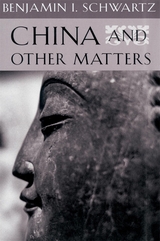 China and Other Matters
Benjamin I. Schwartz
Harvard University Press These writings, representing over a generation of work by one of our most acute commentators on Chinese history, are collected here for the first time and introduced with a masterly prologue. They cut across the boundaries of different fields of knowledge to better understand modern China and traditional Chinese culture.
Schwartz's writings are deeply concerned with the conceptual frameworks and presumptions which we as twentieth-century Westerners bring to bear in our study of foreign cultures. He brings the entire complexity concerning modernity to his analysis of the millennial political, social, and cultural history of China.
This is also an excavation of the conscious life of the Chinese past, an interpretation of the persistent dominant cultural and sociopolitical orientations of Chinese culture. The constancies of behavior and attitudes are made plain in the contingencies and complexities of short-durational and generational history.
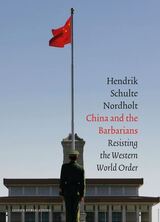 China and the Barbarians: Resisting the Western World Order
Henk Schulte Nordholt
Amsterdam University Press, 2018 "Since times immemorial China regarded its culture, philosophy and statecraft as superior to all other nations, hence the saying Hua Yi Zhi Bian ( ....)- China and the barbarians are different. In the so-called ‘Age of Humiliation’ (1839-1949), Western and Japanese imperialists reduced the old empire to a semi-colony. China has now regained its economic and military strength, but what drives its domestic and foreign policy? President Xi Jinping has declared that ‘Socialism with Chinese Characteristics for a New Era’ is at hand, but China can better be described as a country in search of a new identity. The philosopher Tu Weiming sees China as a battlefield of Socialism, Liberalism and Confucianism. The outcome of this struggle will have profound repercussions. Continuation of the present policy will only lead to increased tensions with its neighbours, because the Communist Party claims that only she can restore China’s rightful position under heaven. Beijing’s land reclamation in the South China Sea and the ‘One Belt, One Road’ initiative are foremost driven by a yearning to restore the days of China’s imperial grandeur. If China choses the ‘third way’ of blending the Confucian meritocratic tradition with a western style representative government, a clash with its neighbours and the United States can be avoided. China and the barbarians offers a fascinating insight into the thinking of China’s philosophers and powerbrokers of the past and present. Interviews with eight prominent Chinese intellectuals add an authentic ring to this book."
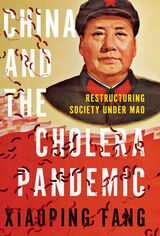 China and the Cholera Pandemic: Restructuring Society under Mao
Xiaoping Fang
University of Pittsburgh Press, 2021 Winner, 2022 Outstanding Academic Title, CHOICE Awards
Mao Zedong’s Great Leap Forward campaign organized millions of Chinese peasants into communes in a misguided attempt to rapidly collectivize agriculture with disastrous effects. Catastrophic famine lingered as the global cholera pandemic of the early 1960s spread rampantly through the infected waters of southeastern coastal China. Confronted with a political crisis and the seventh global cholera pandemic in recorded history, the communist government committed to social restructuring in order to affirm its legitimacy and prevent transmission of the disease. Focusing on the Wenzhou Prefecture in Zhejiang Province, the area most seriously stricken by cholera at the time, Xiaoping Fang demonstrates how China’s pandemic was far more than a health incident; it became a significant social and political influence during a dramatic transition for the People’s Republic.
China and the Cholera Pandemic reveals how disease control and prevention, executed through the government’s large-scale, clandestine anticholera campaign, were integral components of its restructuring initiatives, aimed at restoring social order. The subsequent rise of an emergency disciplinary health state furthered these aims through quarantine and isolation, which profoundly impacted the social epidemiology of the region, dividing Chinese society and reinforcing hierarchies according to place, gender, and socioeconomic status.
China and the International Order
Michael J. Mazarr
RAND Corporation, 2018 As economic power diffuses across more countries and China becomes more dependent on the world economy, Chinese leaders are being forced to abandon their largely passive approach to global governance. This report analyzes China’s interests and behavior to evaluate both the recent history of its interactions with the postwar international order and possible future trajectories. It also draws implications from that analysis for future U.S. policy.
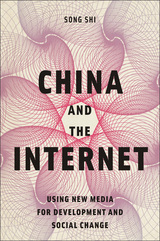 China and the Internet: Using New Media for Development and Social Change
Song Shi
Rutgers University Press, 2024 Two oversimplified narratives have long dominated news reports and academic studies of China’s Internet: one lauding its potentials to boost commerce, the other bemoaning state control and measures against the forces of political transformations. This bifurcation obscures the complexity of the dynamic forces operating on the Chinese Internet and the diversity of Internet-related phenomena. China and the Internet analyzes how Chinese activists, NGOs, and government offices have used the Internet to fight rural malnutrition, the digital divide, the COVID-19 pandemic, and other urgent problems affecting millions of people. It presents five theoretically informed case studies of how new media have been used in interventions for development and social change, including how activists battled against COVID-19. In addition, this book applies a Communication for Development approach to examine the use and impact of China’s Internet. Although it is widely used internationally in Internet studies, Communication for Development has not been rigorously applied in studies of China’s Internet. This approach offers a new perspective to examine the Internet and related phenomena in Chinese society.
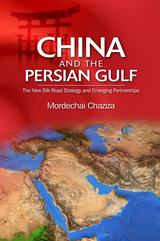 China and the Persian Gulf: The New Silk Road Strategy and Emerging Partnerships
Mordechai Chaziza
Sussex Academic Press, 2022 Since China announced the Belt and Road Initiative (BRI) in 2013, the Gulf States have regarded it as a means for diversifying their national economies in order to reduce dependence on oil revenues and to achieve their national development strategy. The Persian Gulf region has a significant role in the successful implementation of BRI. Emerging strategic, diplomatic and financial partnerships will enable China to control the flow of its exports to world markets. The BRI has five major goals: Policy coordination, facilities connectivity, free trade, financial integration, and people-to-people bonds. Facilities connectivity, which focuses on transportation and energy infrastructure, is the initiative's priority. The integration between the national development plans of Gulf monarchies, the economic reconstruction plans of Iraq and Iran, and the new economic goals of Saudi Arabia, with China's Belt and Road vision have converged to bring forward opportunities. The implementation of the new Silk Road strategy will unleash a regional infrastructure boom by connecting China with Asia, Europe, and Africa by land and sea, boosting renminbi internationalization.
Nevertheless, there are challenges that could complicate the envisaged bilateral partnerships. Saudi Arabia: The strategic synergy between the BRI and Saudi Vision 2030 has forged a joint economic development path, but external conflicts (Yemen, Iran) could derail plans. Iran: While Tehran has a special geographical status in West Asia, Washington's decision to withdraw from the Iran nuclear agreement might create Sino-Iranian trade barriers. The UAE: In July 2018 bilateral relations were elevated to a comprehensive strategic partnership. The synergy between the BRI and UAE Vision 2021 is multifaceted trade, energy, infrastructure and logistics, financial services, military ties, tourism and cultural cooperation but very complex.
Most of the Gulf States are governed by monarchies, are at the primary stage of industrialization, and are susceptible to US and European influence. The challenges China's ascendancy poses for the US, and the inevitable geopolitical fight back, in conjunction with Gulf regional turbulence, mean that the BRI project will face substantive challenges in the years ahead.
China and the Twenty-first-Century Crisis
Minqi Li
Pluto Press, 2015 Most discussions of the global financial crisis take the United States as their focus, both for analyzing what went wrong and for making plans to avoid similar mistakes in the future. But that may not be the case next time: as Minq Li argues convincingly in China and the Twenty-first-Century Crisis, by the time of inevitable next crisis, China will likely be at the epicenter.
Li roots his argument in an analysis of the political and economic imbalances in China that would exacerbate a crisis, and possibly even precipitate a full collapse—and he shows in detail the reasons why that collapse could happen much more quickly than anyone imagines. Writing from a Marxist and ecologically oriented perspective, Li shows unequivocally that the limits to capitalism are fast approaching, and that events in China—essentially the last great frontier for capitalist expansion—are likely to be pivotal.
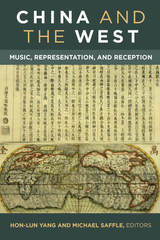 China and the West: Music, Representation, and Reception
Hon-Lun Yang and Michael Saffle, editors
University of Michigan Press, 2017 Western music reached China nearly four centuries ago, with the arrival of Christian missionaries, yet only within the last century has Chinese music absorbed its influence. As China and the West demonstrates, the emergence of “Westernized” music from China—concurrent with the technological advances that have made global culture widely accessible—has not established a prominent presence in the West.
China and the West brings together essays on centuries of Sino-Western musical exchange by musicologists, ethnomusicologists, and music theorists from around the world. It opens with a look at theoretical approaches of prior studies of musical encounters and a comprehensive survey of the intercultural and cross-cultural theoretical frameworks—exoticism, orientalism, globalization, transculturation, and hybridization—that inform these essays. Part I focuses on the actual encounters between Chinese and European musicians, their instruments and institutions, and the compositions inspired by these encounters, while Part II examines theatricalized and mediated East-West cultural exchanges, which often drew on stereotypical tropes, resulting in performances more inventive than accurate. Part III looks at the musical language, sonority, and subject matters of “intercultural” compositions by Eastern and Western composers. Essays in Part IV address reception studies and consider the ways in which differences are articulated in musical discourse by actors serving different purposes, whether self-promotion, commercial marketing, or modes of nationalistic—even propagandistic—expression. The volume’s extensive bibliography of secondary sources will be invaluable to scholars of music, contemporary Chinese culture, and the globalization of culture.
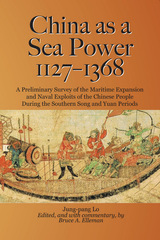 China as a Sea Power, 1127–1368: A Preliminary Survey of the Maritime Expansion and Naval Exploits of the Chinese People During the Southern Song and Yuan Periods
Lo Jung-pang
National University of Singapore Press, 2012 Lo Jung-pang argues that during each of the three periods when imperial China embarked on maritime enterprises (the Qin and Han dynasties, the Sui and early Tang dynasties, and Song, Yuan, and early Ming dynasties), coastal states took the initiative at a time when China was divided, maritime trade and exploration subsequently peaked when China was strong and unified, and declined as Chinese power weakened. At such times, China's people became absorbed by internal affairs, and state policy focused on threats from the north and the west. These cycles of maritime activity, each lasting roughly five hundred years, corresponded with cycles of cohesion and division, strength and weakness, prosperity and impoverishment, expansion and contraction.
In the early 21st century, a strong and outward looking China is again building up its navy and seeking maritime dominance, with important implications for trade, diplomacy and naval affairs. Events will not necessarily follow the same course as in the past, but Lo Jung-pang's analysis suggests useful questions for the study of events as they unfold and decades to come.
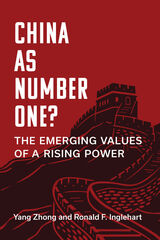 China as Number One?: The Emerging Values of a Rising Power
Yang Zhong and Ronald F. Inglehart
University of Michigan Press, 2024 One of the most significant global events in the last forty years has been the rise of China— economically, technologically, politically, and militarily. The question on people's minds for decades has been whether China will replace the United States as a superpower in the near future. But for China, this power must be comprehensive — having strong economic and militant forces are only two pieces of the puzzle. China must also possess soft power, such as attractive ideologies, values, and culture. China as Number One? explores China’s soft powers through the eyes of Chinese citizens. Utilizing data from the World Values Survey, the contributors to this collection analyze the potential soft power of a rising China by examining its residents' social values. A comprehensive study of changes and continuities in the political and social values of Chinese citizens, the book examines findings in the context of evolutionary modernization theory and cross-national comparison.
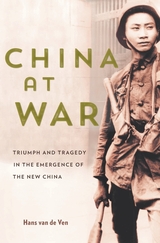 China at War: Triumph and Tragedy in the Emergence of the New China
Hans van de Ven
Harvard University Press, 2018 China’s mid-twentieth-century wars pose extraordinary interpretive challenges. The issue is not just that the Chinese fought for such a long time—from the Marco Polo Bridge Incident of July 1937 until the close of the Korean War in 1953—across such vast territory. As Hans van de Ven explains, the greatest puzzles lie in understanding China’s simultaneous external and internal wars. Much is at stake, politically, in how this story is told.
Today in its official history and public commemorations, the People’s Republic asserts Chinese unity against Japan during World War II. But this overwrites the era’s stark divisions between Communists and Nationalists, increasingly erasing the civil war from memory. Van de Ven argues that the war with Japan, the civil war, and its aftermath were in fact of a piece—a singular process of conflict and political change. Reintegrating the Communist uprising with the Sino-Japanese War, he shows how the Communists took advantage of wartime to increase their appeal, how fissures between the Nationalists and Communists affected anti-Japanese resistance, and how the fractious coalition fostered conditions for revolution.
In the process, the Chinese invented an influential paradigm of war, wherein the Clausewitzian model of total war between well-defined interstate enemies gave way to murky campaigns of national liberation involving diverse domestic and outside belligerents. This history disappears when the realities of China’s mid-century conflicts are stripped from public view. China at War recovers them.
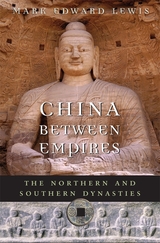 China between Empires: The Northern and Southern Dynasties
Mark Edward Lewis
Harvard University Press, 2011 After the collapse of the Han dynasty in the third century CE, China divided along a north-south line. Mark Lewis traces the changes that both underlay and resulted from this split in a period that saw the geographic redefinition of China, more engagement with the outside world, significant changes to family life, developments in the literary and social arenas, and the introduction of new religions.
The Yangzi River valley arose as the rice-producing center of the country. Literature moved beyond the court and capital to depict local culture, and newly emerging social spaces included the garden, temple, salon, and country villa. The growth of self-defined genteel families expanded the notion of the elite, moving it away from the traditional great Han families identified mostly by material wealth. Trailing the rebel movements that toppled the Han, the new faiths of Daoism and Buddhism altered every aspect of life, including the state, kinship structures, and the economy.
By the time China was reunited by the Sui dynasty in 589 ce, the elite had been drawn into the state order, and imperial power had assumed a more transcendent nature. The Chinese were incorporated into a new world system in which they exchanged goods and ideas with states that shared a common Buddhist religion. The centuries between the Han and the Tang thus had a profound and permanent impact on the Chinese world.
China Diplomacy, 1914-1918
Madeleine Chi
Harvard University Press, 1970 This study of World War I diplomacy concerning China covers in detail the outbreak of the war in the Far East; China's attempt to join the allies in 1915; the secret agreements during 1917 between Japan and Great Britain, France, Italy, and Russia; and later negotiations relative to China's entry into the war.
China Dreams: Growing Up Jewish in Tientsin
Isabelle Maynard
University of Iowa Press, 1996 What does it mean to be “thrice alien”? Isabelle Zimmer Maynard is one who knows. Born in 1929 in Tientsin, China, Maynard was the only child of Russian Jewish parents who had fled the Communists and sought refuge in this teeming city on the North China Sea. They subsequently survived the Japanese invasion of China and ultimately escaped to San Francisco when the Chinese Communists seized power. China Dreams, like a string of beguiling pearls, is a collection of autobiographical stories of an amazing childhood. Maynard's ability to reconstruct her world in the moment will delight and enchant readers. She says, “I have carried China all my life. I do not claim accuracy of history—only accuracy of the heart.” Her keen eye and fetching wit provide an arresting, poignant, highly personal portrait of a now-vanished world once shared by thousands of European Jews.
 China during the Great Depression: Market, State, and the World Economy, 1929–1937
Tomoko Shiroyama
Harvard University Press, 2008 The Great Depression was a global phenomenon: every economy linked to international financial and commodity markets suffered. The aim of this book is not merely to show that China could not escape the consequences of drastic declines in financial flows and trade but also to offer a new perspective for understanding modern Chinese history. The Great Depression was a watershed in modern China. China was the only country on the silver standard in an international monetary system dominated by the gold standard.
Fluctuations in international silver prices undermined China’s monetary system and destabilized its economy. In response to severe deflation, the state shifted its position toward the market from laissez faire to committed intervention. Establishing a new monetary system, with a different foreign-exchange standard, required deliberate government management; ultimately the process of economic recovery and monetary change politicized the entire Chinese economy. By analyzing the impact of the slump and the process of recovery, this book examines the transformation of state-market relations in light of the linkages between the Chinese and the world economy.
China Enters the Twentieth Century: Chang Chih-tung and the Issues of a New Age, 1895-1909
Daniel H. Bays
University of Michigan Press, 1978 Focusing on the major currents of reforms and nationalism, China Enters the Twentieth Century provides an insightful look into the major changes, and those advocating for them, which took hold in China at the turn of the century. With the reorganization of central government and the array of new, competing interests and ideals, stemming from dynastic nobles to populist civilians, contemporary scholars have had many possible methods of approaching this period. However, Daniel H. Bays turns an eye to Chang Chih-tung (1837–1909), an eminent politician and Viceroy of Liangguang, whose political life serves well to mark the course of the Chinese political and cultural landscape. In doing so, Bays challenges old ideas on what provided the foundation for China's entry into the twentieth century.
China Forever: The Shaw Brothers and Diasporic Cinema
Edited by Poshek Fu
University of Illinois Press, 2007 Started in Shanghai in the 1920s, the legendary Shaw Brothers Studio began to dominate the worldwide Chinese film market after moving its production facilities to Hong Kong in 1957. Drawing together scholars from such diverse disciplines as history, cultural geography, and film studies, China Forever addresses how the Shaw Brothers raised the production standards of Hong Kong cinema, created a pan-Chinese cinema culture and distribution network, helped globalize Chinese-language cinema, and appealed to the cultural nationalism of the Chinese who found themselves displaced and unsettled in many parts of the world during the twentieth century. Contributors are Timothy P. Barnard, Cheng Pei-pei, Ramona Curry, Poshek Fu, Lane J. Harris, Law Kar, Sundiata Keita Cha-Jua, Lilly Kong, Siu Leung Li, Paul G. Pickowicz, Fanon Che Wilkins, Wong Ain-ling, and Sai-shing Yung.
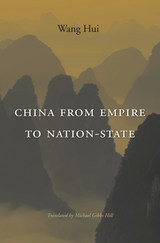 China from Empire to Nation-State
Wang Hui
Harvard University Press, 2014 This translation of the Introduction to Wang Hui’s Rise of Modern Chinese Thought (2004) makes part of his four-volume masterwork available to English readers for the first time. A leading public intellectual in China, Wang charts the historical currents that have shaped Chinese modernity from the Song Dynasty to the present day, and along the way challenges the West to rethink some of its most basic assumptions about what it means to be modern.
China from Empire to Nation-State exposes oversimplifications and distortions implicit in Western critiques of Chinese history, which long held that China was culturally resistant to modernization, only able to join the community of modern nations when the Qing Empire finally collapsed in 1912. Noting that Western ideas have failed to take into account the diversity of Chinese experience, Wang recovers important strains of premodern thought. Chinese thinkers theorized politics in ways that do not line up neatly with political thought in the West—for example, the notion of a “Heavenly Principle” that governed everything from the ordering of the cosmos to the structure of society and rationality itself. Often dismissed as evidence of imperial China’s irredeemably backward culture, many Neo-Confucian concepts reemerged in twentieth-century Chinese political discourse, as thinkers and activists from across the ideological spectrum appealed to ancient precedents and principles in support of their political and cultural agendas. Wang thus enables us to see how many aspects of premodern thought contributed to a distinctly Chinese vision of modernity.
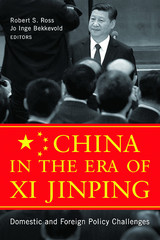 China in the Era of Xi Jinping: Domestic and Foreign Policy Challenges
Robert S. Ross and Jo Inge Bekkevold, Editors
Georgetown University Press Since becoming president of China and general secretary of the Chinese Communist Party, Xi Jinping has emerged as China's most powerful and popular leader since Deng Xiaoping. The breathtaking economic expansion and military modernization that Xi inherited has convinced him that China can transform into a twenty-first-century superpower. In this collection, leading scholars from the United States, Asia, and Europe examine both the prospects for China's continuing rise and the emergent and unintended consequences posed by China's internal instability and international assertiveness. Contributors examine domestic challenges surrounding slowed economic growth, Xi's anti-corruption campaign, and government efforts to maintain social stability. Essays on foreign policy range from the impact of nationalist pressures on international relations to China’s heavy-handed actions in the South China Sea that challenge regional stability and US-China cooperation. The result is a comprehensive analysis of current policy trends in Xi's China and the implications of these developments for his nation, the United States, and Asia-Pacific.
China in the Middle East: The Wary Dragon
Andrew Scobell
RAND Corporation, 2016 This study examines China’s interests in the Middle East and assesses China’s economic, political, and security activities there to determine whether China has a strategy toward the region and what such a strategy means for the United States. The study focuses on China’s relations with two of its key partners in the Middle East: Saudi Arabia and Iran.
China in the Tokugawa World
Marius B. Jansen
Harvard University Press, 1992 This engaging book challenges the traditional notion that Japan was an isolated nation cut off from the outside world in the modern era. This familiar story of seclusion, argues master historian Marius B. Jansen, results from viewing the period soley in terms of Japan's ties with the West, at the expense of its relationship with closer Asian neighbors. Taking as his focus the port of Nagasaki and its thriving trade with China in the sixteenth through nineteenth centuries, Jansen not only corrects this misperception but offers an important analysis of the impact of the China trade on Japan's cultural, economic, and political life.
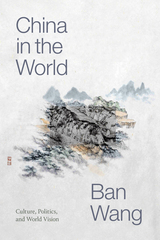 China in the World: Culture, Politics, and World Vision
Ban Wang
Duke University Press, 2022 In China in the World, Ban Wang traces the evolution of modern China from the late nineteenth century to the present. With a focus on tensions and connections between national formation and international outlooks, Wang shows how ancient visions persist even as China has adopted and revised the Western nation-state form. The concept of tianxia, meaning “all under heaven,” has constantly been updated into modern outlooks that value unity, equality, and reciprocity as key to overcoming interstate conflict, social fragmentation, and ethnic divides. Instead of geopolitical dominance, China’s worldviews stem as much from the age-old desire for world unity as from absorbing the Western ideas of the Enlightenment, humanism, and socialism. Examining political writings, literature, and film, Wang presents a narrative of the country’s pursuits of decolonization, national independence, notions of national form, socialist internationalism, alternative development, and solidarity with Third World nations. Rather than national exceptionalism, Chinese worldviews aspire to a shared, integrated, and equal world.
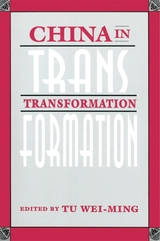 China in Transformation
Tu Wei-ming
Harvard University Press, 1994 What will China look like in 2000? Tectonic forces are at work and its seeming stability has been largely lost after Tiananmen Square. Changing political, social, economic, intellectual, and cultural conditions are transforming China and its neighbors with a majority Chinese population. The authors in this book, taking full advantage of the new freedom of inquiry, shed light on the Chinese experience, elaborating not only on the vast changes sweeping all sectors of Chinese society, but also on the tradition that has persisted. As communism did not erase the past, so new experiences build on the past and tease out newness with great resemblances. Modernity takes many forms, memory repressed for a time may reassert itself; myth, the invention of individuals and collectivities, may be more powerful than prosaic fact. Cultural factors as agents of change appear more important than ever.
This book demonstrates that today Confucian societies have salient features on a restless landscape. The authors confine themselves to enduring questions about today’s Sinic societies so that educated readers and scholars of modern China and the Chinese will better understand the more populous half of the world. Contributing authors include William P. Alford, David E. Apter, Myron L. Cohen, Edward Friedman, Tongqi Lin, Perry Link, Andrew J. Nathan, Benjamin I. Schwartz, Tianjian Shi, Helen F. Siu, Wang Gungwu, and Ying-shih Yü.
 China Inside Out: Contemporary Chinese Nationalism and Transnationalism
Joana Breidenbach
Central European University Press, 2005 The authors of this text believe that “areas” as assemblages of social processes requiring distinct, culture-bound explanations cannot be replaced with global theories, but that the meaning of “the area” can be different depending on the question one studies. The study of China and Chinese, in particular, is a good arena to challenge the disciplinary and geographic boundaries of conventional area studies for several reasons. First, because of the wealth of simultaneous processes of rapid political, social, and discursive change in contemporary Chinese society; second, because of the problematic relationship between state, territory, nation, and ethnicity in China; third, because China studies, perhaps more than any other area studies at the moment, is a highly competitive political and academic industry whose internal working must be critically examined. In addition, the subject of China has become one of the primary loci of contesting the meanings of globalization and the universality versus relativity of “values” and modernity.
The China Journal, volume 87 number 1 (January 2022)
The University of Chicago Press
University of Chicago Press Journals, 2022 This is volume 87 issue 1 of The China Journal. The China Journal is a cutting-edge source of scholarship, information and analysis about China and Taiwan. TCJ has published informed and insightful commentary from China scholars worldwide and stimulated the scholarly debate on contemporary China for more than thirty years. With its reputation for quality and clarity, the journal has proven itself invaluable for instruction and research about one of the most significant regions in the world. Interdisciplinary in scope, TCJ provides deep coverage of important anthropological, sociological, and political science topics. In addition to a wide range of articles, TCJ also publishes high-quality reviews of recent books published on modern China.
The China Journal, volume 88 number 1 (July 2022)
The University of Chicago Press
University of Chicago Press Journals, 2022 This is volume 88 issue 1 of The China Journal. The China Journal is a cutting-edge source of scholarship, information and analysis about China and Taiwan. TCJ has published informed and insightful commentary from China scholars worldwide and stimulated the scholarly debate on contemporary China for more than thirty years. With its reputation for quality and clarity, the journal has proven itself invaluable for instruction and research about one of the most significant regions in the world. Interdisciplinary in scope, TCJ provides deep coverage of important anthropological, sociological, and political science topics. In addition to a wide range of articles, TCJ also publishes high-quality reviews of recent books published on modern China.
The China Journal, volume 89 number 1 (January 2023)
The University of Chicago Press
University of Chicago Press Journals, 2023 This is volume 89 issue 1 of The China Journal. The China Journal is a cutting-edge source of scholarship, information and analysis about China and Taiwan. TCJ has published informed and insightful commentary from China scholars worldwide and stimulated the scholarly debate on contemporary China for more than thirty years. With its reputation for quality and clarity, the journal has proven itself invaluable for instruction and research about one of the most significant regions in the world. Interdisciplinary in scope, TCJ provides deep coverage of important anthropological, sociological, and political science topics. In addition to a wide range of articles, TCJ also publishes high-quality reviews of recent books published on modern China.
The China Journal, volume 90 number 1 (July 2023)
The University of Chicago Press
University of Chicago Press Journals, 2023 This is volume 90 issue 1 of The China Journal. The China Journal is a cutting-edge source of scholarship, information and analysis about China and Taiwan. TCJ has published informed and insightful commentary from China scholars worldwide and stimulated the scholarly debate on contemporary China for more than thirty years. With its reputation for quality and clarity, the journal has proven itself invaluable for instruction and research about one of the most significant regions in the world. Interdisciplinary in scope, TCJ provides deep coverage of important anthropological, sociological, and political science topics. In addition to a wide range of articles, TCJ also publishes high-quality reviews of recent books published on modern China.
The China Journal, volume 91 number 1 (January 2024)
The University of Chicago Press
University of Chicago Press Journals, 2024 This is volume 91 issue 1 of The China Journal. The China Journal is a cutting-edge source of scholarship, information and analysis about China and Taiwan. TCJ has published informed and insightful commentary from China scholars worldwide and stimulated the scholarly debate on contemporary China for more than thirty years. With its reputation for quality and clarity, the journal has proven itself invaluable for instruction and research about one of the most significant regions in the world. Interdisciplinary in scope, TCJ provides deep coverage of important anthropological, sociological, and political science topics. In addition to a wide range of articles, TCJ also publishes high-quality reviews of recent books published on modern China.
The China Journal, volume 92 number 1 (July 2024)
The University of Chicago Press
University of Chicago Press Journals, 2024 This is volume 92 issue 1 of The China Journal. The China Journal is a cutting-edge source of scholarship, information and analysis about China and Taiwan. TCJ has published informed and insightful commentary from China scholars worldwide and stimulated the scholarly debate on contemporary China for more than thirty years. With its reputation for quality and clarity, the journal has proven itself invaluable for instruction and research about one of the most significant regions in the world. Interdisciplinary in scope, TCJ provides deep coverage of important anthropological, sociological, and political science topics. In addition to a wide range of articles, TCJ also publishes high-quality reviews of recent books published on modern China.
The China Journal, volume 93 number 1 (January 2025)
The University of Chicago Press
University of Chicago Press Journals, 2025 This is volume 93 issue 1 of The China Journal. The China Journal is a cutting-edge source of scholarship, information and analysis about China and Taiwan. TCJ has published informed and insightful commentary from China scholars worldwide and stimulated the scholarly debate on contemporary China for more than thirty years. With its reputation for quality and clarity, the journal has proven itself invaluable for instruction and research about one of the most significant regions in the world. Interdisciplinary in scope, TCJ provides deep coverage of important anthropological, sociological, and political science topics. In addition to a wide range of articles, TCJ also publishes high-quality reviews of recent books published on modern China.
The China Journal, volume 94 number 1 (July 2025)
The University of Chicago Press
University of Chicago Press Journals, 2025 This is volume 94 issue 1 of The China Journal. The China Journal is a cutting-edge source of scholarship, information and analysis about China and Taiwan. TCJ has published informed and insightful commentary from China scholars worldwide and stimulated the scholarly debate on contemporary China for more than thirty years. With its reputation for quality and clarity, the journal has proven itself invaluable for instruction and research about one of the most significant regions in the world. Interdisciplinary in scope, TCJ provides deep coverage of important anthropological, sociological, and political science topics. In addition to a wide range of articles, TCJ also publishes high-quality reviews of recent books published on modern China.
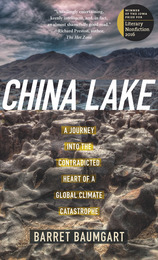 China Lake: A Journey into the Contradicted Heart of a Global Climate Catastrophe
Barret Baumgart
University of Iowa Press, 2017 Barret Baumgart’s literary debut presents a haunting and deeply personal portrait of civilization poised at the precipice, a picture of humanity caught between its deepest past and darkest future. In the fall of 2013, during the height of California’s historic drought, Baumgart toured the remote military base, NAWS China Lake, near Death Valley, California. His mother, the survivor of a recent stroke, decided to come along for the ride. She hoped the alleged healing power of the base’s ancient Native American hot springs might cure her crippling headaches. Baumgart sought to debunk claims that the military was spraying the atmosphere with toxic chemicals to control the weather. What follows is a discovery that threatens to sever not only the bonds between mother and son but between planet Earth and life itself.
Stalking the fringes of Internet conspiracy, speculative science, and contemporary archaeology, Baumgart weaves memoir, military history, and investigative journalism in a dizzying journey that carries him from the cornfields of Iowa to drought-riddled California, from the Vietnam jungle to the caves of prehistoric Europe and eventually the walls of the US Capitol, the sparkling white hallways of the Pentagon, and straight into the contradicted heart of a worldwide climate emergency.
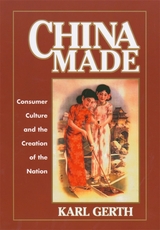 China Made: Consumer Culture and the Creation of the Nation
Karl Gerth
Harvard University Press, 2003 “Chinese people should consume Chinese products!” This slogan was the catchphrase of a movement in early twentieth-century China that sought to link consumption and nationalism by instilling a concept of China as a modern “nation” with its own “national products.” From fashions in clothing to food additives, from museums to department stores, from product fairs to advertising, this movement influenced all aspects of China’s burgeoning consumer culture. Anti-imperialist boycotts, commemorations of national humiliations, exhibitions of Chinese products, the vilification of treasonous consumers, and the promotion of Chinese captains of industry helped enforce nationalistic consumption and spread the message—patriotic Chinese bought goods made of Chinese materials by Chinese workers in factories owned and run by Chinese.
In China Made, Karl Gerth argues that two key forces shaping the modern world—nationalism and consumerism—developed in tandem in China. Early in the twentieth century, nationalism branded every commodity as either “Chinese” or “foreign,” and consumer culture became the place where the notion of nationality was articulated, institutionalized, and practiced. Based on Chinese, Japanese, and English-language archives, magazines, newspapers, and books, this first exploration of the historical ties between nationalism and consumerism reinterprets fundamental aspects of modern Chinese history and suggests ways of discerning such ties in all modern nations.
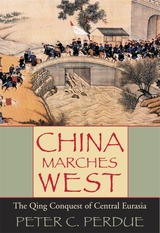 China Marches West: The Qing Conquest of Central Eurasia
Peter C. Perdue
Harvard University Press, 2005 From about 1600 to 1800, the Qing empire of China expanded to unprecedented size. Through astute diplomacy, economic investment, and a series of ambitious military campaigns into the heart of Central Eurasia, the Manchu rulers defeated the Zunghar Mongols, and brought all of modern Xinjiang and Mongolia under their control, while gaining dominant influence in Tibet. The China we know is a product of these vast conquests.
Peter C. Perdue chronicles this little-known story of China’s expansion into the northwestern frontier. Unlike previous Chinese dynasties, the Qing achieved lasting domination over the eastern half of the Eurasian continent. Rulers used forcible repression when faced with resistance, but also aimed to win over subject peoples by peaceful means. They invested heavily in the economic and administrative development of the frontier, promoted trade networks, and adapted ceremonies to the distinct regional cultures.
Perdue thus illuminates how China came to rule Central Eurasia and how it justifies that control, what holds the Chinese nation together, and how its relations with the Islamic world and Mongolia developed. He offers valuable comparisons to other colonial empires and discusses the legacy left by China’s frontier expansion. The Beijing government today faces unrest on its frontiers from peoples who reject its autocratic rule. At the same time, China has launched an ambitious development program in its interior that in many ways echoes the old Qing policies.
China Marches West is a tour de force that will fundamentally alter the way we understand Central Eurasia.
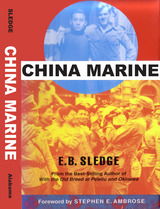 China Marine
E. B. Sledge
University of Alabama Press, 2002 From the respected author of one of the best books on World War II combat, comes an equally captivating saga of battle recovery, healing, and homecoming.
China Marine is the long-awaited sequel to E. B. Sledge’s critically acclaimed memoir, With the Old Breed at Peleliu and Okinawa. Picking up where his previous memoir leaves off, Sledge, a young marine in the First Division, traces his company’s movements and charts his own difficult passage to peace following his horrific experiences in the Pacific. He reflects on his duty in the ancient city of Peiping (now Beijing) and recounts the difficulty of returning to his hometown of Mobile, Alabama, and resuming civilian life haunted by the shadows of close combat.
Distinguished historians have praised Sledge’s first book as the definitive rifleman’s account of World War II, ranking it with the Civil War’s Red Badge of Courage and World War I’s All Quiet on the Western Front. Although With the Old Breed ends with the surrender of Japan, marines in the Pacific were still faced with the mission of disarming the immense Japanese forces on the Asian mainland and reestablishing order. For infantrymen so long engaged in the savage and surreal world of close combat, there remained the personal tasks of regaining normalcy and dealing with suppressed memories, fears, and guilt.
In China Marine, E. B. Sledge completes his story and provides emotional closure to the searing events detailed in his first memoir. He speaks frankly about the real costs of war, emotional and psychological as well as physical, and explains the lifetime loyalties that develop between men who face fear, loss, and horror together. That bond becomes one of the newfound treasures of life after battle.
With his hallmark style of simplicity, directness, and lack of sentimentality, "Sledgehammer" has given us yet another great document of war literature.
 China Pop!: Pop Culture, Propaganda, Pacific Pop-Ups
Sheng-mei Ma
Ohio State University Press, 2024 In China Pop! Sheng-mei Ma analyzes the propaganda-laced millennial Chinese pop culture—particularly TV dramas, films, and web novels—that streams online for over one billion Sinophone consumers in China and in diaspora. In part 1, Ma lays bare the “seductive art of propaganda” by reviewing TV series aired during the Chinese Communist Party Centennial in 2021 and the ways pop culture and propaganda are spliced. In part 2, he zeroes in on how the shared traumatic shock of the Cultural Revolution continues to echo. Parts 3 and 4 cross the Pacific to incorporate analysis of media originating outside of China, such as white depictions of revolutionary zeal and Asian American portrayals of immigrant characters that fetishize Asianness and reanimate stereotypes. With methodological daring, Ma challenges existing scholarship by blending the professional and the personal through a lively and accessible autotheoretical approach. China Pop! walks the East-West cultural tightrope to critique a wide range of pop culture from both sides of the Pacific and sheds new light on the workings of propaganda on its intended audiences and its wider, more subtle reaches in both political and cultural spheres.
 The China Questions 2: Critical Insights into US-China Relations
Maria Adele Carrai
Harvard University Press, 2022 “A timely book...An impressive roster of authors collectively provides a broad overview of the many aspects of the relationship, going well beyond diplomacy and politics. The essays also work beautifully by themselves.” —Odd Arne Westad, author of Empire and Righteous Nation
“Offers a wide range of accessible essays on topics from international relations to culture, in a tone that is lively and argumentative but always balanced. Overall, the book has a powerful message: the United States needs informed and clear-eyed engagement with China.” —Rana Mitter, author of China’s Good War
For decades, Americans have described China as a rising power. But China has already risen. What does this mean for the United States, for the global economy, and for international security? Tackling key issues, providing historical perspective, and demystifying stereotypes, Maria Adele Carrai, Jennifer Rudolph, Michael Szonyi, and an all-star group of China experts offer essential insights into the many dimensions of the world’s most important bilateral relationship.
Ranging across questions of security, economics, military development, climate change, public health, science and technology, education, and the worrying flashpoints of Hong Kong, Taiwan, and Xinjiang, the concise essays that compose this book are ideal vantage points on the tensions as well as the potential collaborations between China and the United States. The China Questions 2 makes clear that we are faced not with another Cold War but with something more complex that must be understood on its own terms.
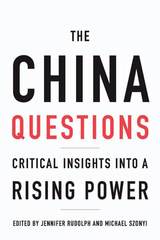 The China Questions: Critical Insights into a Rising Power
Jennifer Rudolph
Harvard University Press, 2018 “Cuts through the cacophony of information, misinformation, and nonsense on China that circulates in our modern world to give us reliable answers to crucial questions… Should be on the shelf of anyone seeking to understand this fast-rising superpower.”
—Ian Johnson, author of The Souls of China
After years of isolation, China is now center stage as an economic and global power, but its rise has triggered wildly divergent views. Is it a model of business efficiency or a threat to American prosperity and security? Thirty-six of the world’s leading China experts from Harvard University’s renowned Fairbank Center for Chinese Studies answer key questions about this new superpower, distilling a lifetime of scholarship into short and accessible essays about Chinese politics, culture, history, economy, approach to the environment, and foreign policy. Their contributions provide essential insight into the challenges China faces, the aspirations of its people and leaders, its business climate, and the consequences of its meteoric ascent. Many books offer information about China, but few make sense of what is truly at stake.
“Impressive… A highly informative, readable collection for scholars and nonscholars alike.”
—Publishers Weekly
“Provides a more nuanced and accessible perspective on the issues China is facing.”
—South China Morning Post
“Erudite yet accessible… The topical reach is impressive.”
—Jeffrey Wasserstrom, author of China in the 21st Century
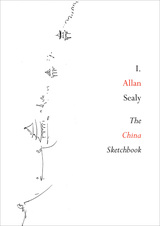 The China Sketchbook
I. Allan Sealy
Seagull Books, 2016 A camera makes enemies; a sketchbook, friends. Firm in this belief, Irwin Allan Sealy carried to China just his pen and a book of blank pages. When the literary conference that took him there ended and his fellow writers returned to India, Sealy stayed on to travel the railroads of the north in search of a town reminiscent of his Himalayan hometown and a man who might resemble himself. Sign language, good will, and plain luck see him through, but in a northern mining town known for its ancient Buddhist cave sculptures, Sealy finally comes to the conclusion that his other was unreachable, his hometown was one of a kind, and his only hope was a pen, allowing him to record his memories, sketches, and adventures along the way.
Sealy is known for both his fiction and his travelogue From Yukon to Yukatan: A Western Journey. This facsimile edition of The China Sketchbook, however, adds a special dimension to a travel narrative—the sketches and scribbles give readers a more immediate and unrestrained insight into the mind of a very fine writer and chart an unusual and quirky travel diary.
 China: The People’s Middle Kingdom and the U.S.A.
John King Fairbank
Harvard University Press Public discussion of our China policy in recent months has emphasized the need for a historical view of the ancient "Middle Kingdom" (the Chinese name for China) and its modern revolution. Fairbank has been a leading witness before Congressional groups such as Senator Fulbright's Committee on Foreign Relations, where his testimony received worldwide attention. This volume presents the major themes of his testimony more fully by bringing together essays first published in various national journals, mainly in 1966.
The three parts of this book--"China's Revolution in the Light of Her Past," "The Taiwan Problem," and "Communist China and American Policy"--all bring a knowledge of China's long tradition to bear upon her present crisis. China's past still provides the main repertory of themes and styles, assumptions and methods, upon which her leaders draw in trying to meet their problems. Mao and his party are both circumscribed and inspired by the history of their Middle Kingdom. Although this history is by no means the sole determinant of their actions, it is the specific factor least well known, and therefore most illuminating, to Americans.
The importance and timeliness of these essays, the urgency of their subject matter, are plain enough. As Fairbank says, "We have to face the fact that the Chinese quarter of mankind live on the other side of a cultural gap, and our effort to bridge this gap in the next decade may make us or break us."
China Turning Inward: Intellectual-Political Changes in the Early Twelfth Century
James T. C. Liu
Harvard University Press During the traumatic opening decades of the Southern Sung, Emperor Kao-tsung's unspoken determination to win imperial safety at any cost shaped not only court policy but Confucian intellectual developments. The intellectual climate of the Northern Sung had been confident, buoyant, outreaching, and exploratory; in the Southern Sung, it turned inward. The turn was not, however, a simple turn to conservative moral and political Confucianism; and in this book, James T. C. Liu explores how Kao-tsung used ideological window-dressing to consolidate extraordinary state power in the emperor's hands. Ups and downs in the political fortunes of moralistic conservatives are also specially examined for their effects on the nature of the Neo-Confucianism that eventually became state orthodoxy.
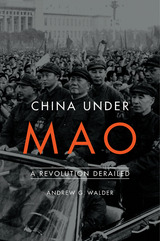 China Under Mao: A Revolution Derailed
Andrew G. Walder
Harvard University Press, 2015 China’s Communist Party seized power in 1949 after a long period of guerrilla insurgency followed by full-scale war, but the Chinese revolution was just beginning. China Under Mao narrates the rise and fall of the Maoist revolutionary state from 1949 to 1976—an epoch of startling accomplishments and disastrous failures, steered by many forces but dominated above all by Mao Zedong.
“Walder convincingly shows that the effect of Maoist inequalities still distorts China today…[It] will be a mind-opening book for many (and is a depressing reminder for others).”
—Jonathan Mirsky, The Spectator
“Andrew Walder’s account of Mao’s time in power is detailed, sophisticated and powerful…Walder takes on many pieces of conventional wisdom about Mao’s China and pulls them apart…What was it that led so much of China’s population to follow Mao’s orders, in effect to launch a civil war against his own party? There is still much more to understand about the bond between Mao and the wider population. As we try to understand that bond, there will be few better guides than Andrew Walder’s book. Sober, measured, meticulous in every deadly detail, it is an essential assessment of one of the world’s most important revolutions.”
—Rana Mitter, Times Literary Supplement
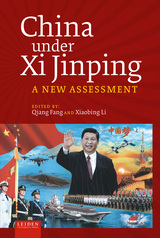 China under Xi Jinping: A New Assessment - Status: NOT AVAILABLE
Qiang Fang
Leiden University Press, 2024 ‘China Under Xi Jinping: A New Assessment’ is one of the first scholarly books on Xi’s China during the Pandemic, which contains several features that are unmatched by existing scholarship. First, all the authors have studied and taught Chinese and American history or politics in both China and the United States for decades. They accordingly are quite familiar with and possess deep understandings of the history, politics, ideology, and society in both countries and therefore their research would be more balanced and nuanced if not more profound than that of many western or China-based students. Second, most authors are historians who examine Xi Jinping’s China and China’s relationship with the West from a motley crew of historical backdrops and perspectives. Their probe into the historical trajectory, precedents, causes, and problems of Xi’s policies and intentions helps readers have a better sense of what Xi and his regime could do in the future. Third, most authors are established and internationally renowned scholars in their respective fields. The last feature of this book is that it will be one of the first studies spanning from Xi Jinping’s rise to power in the early 2000s to the pandemic era and beyond. The authors have kept a close eye on the latest developments and sources to analyze and compare Xi’ policies as well as his relations with the West before and after the Pandemic.
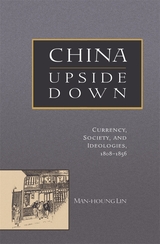 China Upside Down: Currency, Society, and Ideologies, 1808–1856
Man-houng Lin
Harvard University Press, 2006 Many scholars have noted the role of China's demand for silver in the emergence of the modern world. This book discusses the interaction of this demand and the early-nineteenth-century Latin American independence movements, changes in the world economy, the resulting disruptions in the Qing dynasty, and the transformation from the High Qing to modern China. Man-houng Lin shows how the disruption in the world's silver supply caused by the turmoil in Latin America and subsequent changes in global markets led to the massive outflow of silver from China and the crisis of the Qing empire. During the first stage of this dynastic crisis, traditional ideas favoring plural centers of power became more popular than they ever had been. As the crisis developed, however, statist ideas came to the fore. Even though the Qing survived with the resumption of the influx of Latin American silver, its status relative to Japan in the East Asian order slipped. The statist inclination, although moderated to a degree in the modern period, is still ascendant in China today. These changes—Qing China's near-collapse, the beginning of its eclipse by Japan in the East Asian order, and shifting notions of the proper relationship between state and market and between state and society—led to "China upside down."
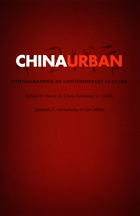 China Urban: Ethnographies of Contemporary Culture
Nancy N. Chen, Constance D. Clark, Suzanne Z. Gottschang, and Lyn Jeffery, eds.
Duke University Press, 2001 China Urban is an ethnographic account of China’s cities and the place that urban space holds in China’s imagination. In addition to investigating this nation’s rapidly changing urban landscape, its contributors emphasize the need to rethink the very meaning of the “urban” and the utility of urban-focused anthropological critiques during a period of unprecedented change on local, regional, national, and global levels. Through close attention to everyday lives and narratives and with a particular focus on gender, market, and spatial practices, this collection stresses that, in the case of China, rural life and the impact of socialism must be considered in order to fully comprehend the urban. Individual essays note the impact of legal barriers to geographic mobility in China, the proliferation of different urban centers, the different distribution of resources among various regions, and the pervasive appeal of the urban, both in terms of living in cities and in acquiring products and conventions signaling urbanity. Others focus on the direct sales industry, the Chinese rock music market, the discursive production of femininity and motherhood in urban hospitals, and the transformations in access to healthcare. China Urban will interest anthropologists, sociologists, political scientists, and those studying urban planning, China, East Asia, and globalization. Contributors. Tad Ballew, Susan Brownell, Nancy N. Chen, Constance D. Clark, Robert Efird, Suzanne Z. Gottschang, Ellen Hertz, Lisa Hoffman, Sandra Hyde, Lyn Jeffery, Lida Junghans, Louisa Schein, Li Zhang
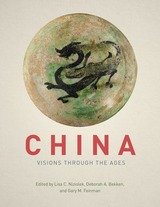 China: Visions through the Ages
Edited by Lisa C. Niziolek, Deborah A. Bekken and Gary M. Feinman
University of Chicago Press, 2018 At the entrance of The Field Museum’s Cyrus Tang Hall of China, two Chinese stone guardian lions stand tall, gazing down intently at approaching visitors. One lion’s paw rests upon a decorated ball symbolizing power, while the other lion cradles a cub. Traditionally believed to possess attributes of strength and protection, statues such as these once stood guard outside imperial buildings, temples, and wealthy homes in China. Now, centuries later, they guard this incredible permanent exhibition.
China’s long history is one of the richest and most complex in the known world, and the Cyrus Tang Hall of China offers visitors a wonderful, comprehensive survey of it through some 350 artifacts on display, spanning from the Paleolithic period to present day. Now, with China: Visions through the Ages, anyone can experience the marvels of this exhibition through the book’s beautifully designed and detailed pages. Readers will gain deeper insight into The Field Museum’s important East Asian collections, the exhibition development process, and research on key aspects of China’s fascinating history. This companion book, edited by the exhibition’s own curatorial team, takes readers even deeper into the wonders of the Cyrus Tang Hall of China and enables them to study more closely the objects and themes featured in the show. Mirroring the exhibition’s layout of five galleries, the volume is divided into five sections. The first section focuses on the Paleolithic and Neolithic periods; the second, the Bronze Age, the first dynasties, and early writing; the third, the imperial system and power; the fourth, religion and performance; and the fifth, interregional trade and the Silk Routes. Each section also includes highlights containing brief stories on objects or themes in the hall, such as the famous Lanting Xu rubbing.
With chapters from a diverse set of international authors providing greater context and historical background, China: Visions through the Ages is a richly illustrated volume that allows visitors, curious readers, and China scholars alike a chance to have an enduring exchange with the objects featured in the exhibition and with their multifaceted histories.
 China Watch
John King Fairbank
Harvard University Press, 1987 America’s top China–watcher, the renowned pandit of modern Chinese history, here provides an unrivaled overview of revolutionary China and Chinese–American relations. His reviews and critical commentary scrutinize our always fascinated, often puzzled attitude toward this newly emergent superpower.
John Fairbank distinguishes two major motifs in recent Chinese–American connections: the American expectation of highly profitable trade and investment, which so far have not materialized, and the deep–rooted missionary impulse to give the Chinese the best of our culture, which includes our efforts to promote human rights. The possibility of grafting our ideas of individual endeavor and God–given prerogatives onto two thousand years of Confucianism with its emphasis on duty and collective harmony seems remote. In contrast, the outlook for mutually enriching economic dealings is much brighter. Yet Fairbank cautions that we are dealing with a huge and disoriented nation struggling to enter the modern world with its own cultural identity intact, and (at least in the current period) with its Communist Party in power. Confucian tenets still prevail: theory and practice are a unity policies are a form of conduct manifesting one’s character, and attacks on policy equal attacks on the ruling party.
These writings concern China in the mind’s eye of America—as it is interpreted though the works of American merchants, diplomats, missionaries, and reporters observing China’s travail of revolution. For generalist, scholar, and sage alike, China Watch offers many insights.
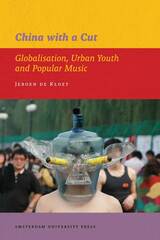 China with a Cut: Globalisation, Urban Youth and Popular Music
Jeroen de Kloet
Amsterdam University Press, 2010 In the wake of intense globalisation and commercialisation in the 1990s, China saw the emergence of a vibrant popular culture. Drawing on sixteen years of research, Jeroen de Kloet explores the popular music industry in Beijing, Hong Kong and Shanghai, providing a fascinating history of its emergence and extensive audience analysis, while also exploring the effect of censorship on the music scene in China.
China with a Cut pays particular attention to the dakou culture: so named after a cut nicked into the edge to render them unsellable, these illegally imported Western CDs still play most of the tracks. They also played a crucial role in the emergence of the new music and youth culture. De Kloet’s impressive study demonstrates how the young Chinese cope with the rapid economic and social changes in a period of intense globalisation, and offers a unique insight into the socio-cultural and political transformations of a rising global power.
 The China-India Rivalry in the Globalization Era
T.V. Paul, Editor
Georgetown University Press, 2018 As the aspirations of the two rising Asian powers collide, the China-India rivalry is likely to shape twenty-first-century international politics in the region and far beyond. This volume by T.V. Paul and an international group of leading scholars examines whether the rivalry between the two countries that began in the 1950s will intensify or dissipate in the twenty-first century. The China-India relationship is important to analyze because past experience has shown that when two rising great powers share a border, the relationship is volatile and potentially dangerous. India and China’s relationship faces a number of challenges, including multiple border disputes that periodically flare up, division over the status of Tibet and the Dalai Lama, the strategic challenge to India posed by China's close relationship with Pakistan, the Chinese navy's greater presence in the Indian Ocean, and the two states’ competition for natural resources. Despite these irritants, however, both countries agree on issues such as global financial reforms and climate change and have much to gain from increasing trade and investment, so there are reasons for optimism as well as pessimism. The contributors to this volume answer the following questions: What explains the peculiar contours of this rivalry? What influence does accelerated globalization, especially increased trade and investment, have on this rivalry? What impact do US-China competition and China’s expanding navy have on this rivalry? Under what conditions will it escalate or end? The China-India Rivalry in the Globalization Era will be of great interest to students, scholars, and policymakers concerned with Indian and Chinese foreign policy and Asian security.
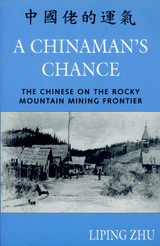 A Chinaman's Chance: The Chinese on the Rocky Mountain Mining Frontier
Liping Zhu
University Press of Colorado, 2000 Writers and historians have traditionally portrayed Chinese immigrants in the nineteenth-century American West as victims. By investigating the early history of Idaho's Boise Basin, Liping Zhu challenges this image and offers an alternative discourse to the study of this ethnic minority.Between 1863 and 1910, a large number of Chinese immigrants resided in the Boise Basin to search for gold. As in many Rocky Mountain mining camps, they comprised a majority of the population. Unlike settlers in many other boom-and-bust western mining towns, the Chinese in the Boise Basin managed to stay there for more than half a century. Thus, the Chinese portrayed all the stereotypical frontier roles-victors, victims, and villains. Their basic material needs were guaranteed, and many individuals were able to climb up the economic ladder. Frontier justice was used to settle disputes; Chinese-Americans frequently challenged white opponents in the various courts as well as in gun battles. Interesting and provocative, A Chinaman's Chance not only offers general readers a narrative account of the Rocky Mountain mining frontier, but also introduces a fresh interpretation of the Chinese experience in nineteenth-century America to scholars interested in Asian American studies, immigration history, and ethnicity in the American West.
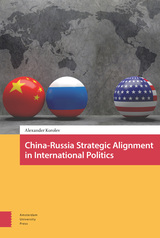 China-Russia Strategic Alignment in International Politics
Alexander Korolev
Amsterdam University Press, 2022 Post-Cold War China-Russia strategic cooperation has displayed significant development and become an increasingly important factor in contemporary international politics. However, there has been no theory-grounded framework and corresponding measurements that would allow an accurate and systematic assessment of the level of China-Russia alignment and its progress over time. How closely aligned are China and Russia? How to define and measure strategic alignments between states? This book bridges area studies and International Relations literature to develop a set of objective criteria to measure and explain the development of strategic alignment in post-Cold War China-Russia relations. China-Russia Strategic Alignment in International Politics establishes that on a range of criteria, China-Russia alignment has been moving towards a full-fledged alliance, showing a consistent incremental upward trend. There are strong structural incentives for furthering the China-Russia alignment. The alignment framework developed in the book is applicable to other cases of interstate strategic cooperation and enables systematic comparisons of different strategic alignments.
China’s Allocation of Fixed Capital Investment, 1952–1957
Cheng Chu-yuan
University of Michigan Press, 1974 China’s efforts to stimulate industrial development and economic growth through the allocation of investments are analyzed. Cheng concludes with an overall assessment of the distinctive features of the allocation pattern. Includes 41 statistical tables.
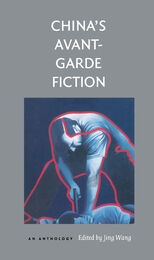 China's Avant-Garde Fiction: An Anthology
Jing Wang, ed.
Duke University Press, 1998 Filled with mirages, hallucinations, myths, mental puzzles, and the fantastic, the contemporary experimental fiction of the Chinese avant-garde represents a genre of storytelling unlike any other. Whether engaging the worn spectacle of history, expressing seemingly unmotivated violence, or reinventing outlandish Tibetan myths, these stories are defined by their devotion to theatrics and their willful apathy toward everything held sacred by the generation that witnessed the Cultural Revolution.
Jing Wang has selected provocative examples of this new school of writing, which gained prominence in the late 1980s. Contradicting many long-cherished beliefs about Chinese writers—including the alleged tradition of writing as a political act against authoritarianism—these stories make a dramatic break from conventions of modern Chinese literature by demonstrating an irreverence toward history and culture and by celebrating the artificiality of storytelling. Enriched by the work of a distinguished group of translators, this collection presents an aesthetic experience that may have outraged many revolutionary-minded readers in China, but one that also occupies an important place in the canon of Chinese literature. China’s Avant-Garde Fiction brings together a group of exceptional writers (including Raise the Red Lantern author Su Tong) to the attention of an English-speaking audience.
This book will be enjoyed by those interested in Chinese literature, culture, and society—particularly readers of contemporary fiction.
Contributors. Bei Cun, Can Xue, Gei Fei, Ma Yuan, Su Tong, Sun Ganlu, Yu Hua
Translators. Eva Shan Chou, Michael S. Duke, Howard Goldblatt, Ronald R. Janssen, Andrew F. Jones, Denis C. Mair, Victor H. Mair, Caroline Mason, Beatrice Spade, Kristina M. Torgeson, Jian Zhang, Zhu Hong
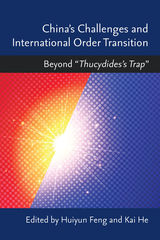 China’s Challenges and International Order Transition: Beyond “Thucydides's Trap”
Edited by Huiyun Feng and Kai He
University of Michigan Press, 2020 China’s Challenges and International Order Transition introduces an integrated conceptual framework of “international order” categorized by three levels (power, rules, and norms) and three issue-areas (security, political, and economic). Each contributor engages one or more of these analytical dimensions to examine two questions: (1) Has China already challenged this dimension of international order? (2) How will China challenge this dimension of international order in the future? The contested views and perspectives in this volume suggest it is too simple to assume an inevitable conflict between China and the outside world. With different strategies to challenge or reform the many dimensions of international order, China’s role is not a one-way street. It is an interactive process in which the world may change China as much as China may change the world. The aim of the book is to broaden the debate beyond the “Thucydides Trap” perspective currently popular in the West. Rather than offering a single argument, this volume offers a platform for scholars, especially Chinese scholars vs. Western scholars, to exchange and debate their different views and perspectives on China and the potential transition of international order.
 China's Church Divided: Bishop Louis Jin and the Post-Mao Catholic Revival
Paul P. Mariani
Harvard University Press, 2025 An illuminating portrait of how Shanghai’s Catholic community surged back to life after the Cultural Revolution—and of a Church divided between allegiance to the Vatican and loyalty to the Communist party-state.
During the Cultural Revolution, the Chinese state sought to eradicate religious life throughout the country. But by 1978, two years after the death of Mao Zedong, the Communist Party under Deng Xiaoping cautiously embraced the revival of religion. At the same time, in Rome, the newly elected Pope John Paul II made a point of renewing outreach to China. Paul P. Mariani tracks the fate of Chinese Catholicism in the wake of these transformative leadership changes, focusing on the influential Catholic community in Shanghai.
Even as Chinese Catholicism came back to life in the 1980s, the way forward was hardly an easy one. Earlier policies of the 1950s had fractured the Catholic community into a state-approved “patriotic” church that answered to the government and an underground church loyal to Rome. Even after the Cultural Revolution, Mariani shows, this divide remained firmly intact. The resulting tensions were on vivid display in Shanghai, owing to the leadership of the Jesuit priest Louis Jin Luxian. Formerly a member of the underground church, Jin realigned with the state church during the revival and was consecrated bishop of Shanghai without papal approval in 1985. Bishop Jin used his position to revitalize the local Catholic community, but his cooperation with the party put him ever at odds with underground church leaders.
Sensitive to the ideals, compromises, and disappointments of Catholics on both sides of the rift, China’s Church Divided reveals how the community navigated the irreconcilable differences between a worldwide Church centered in Rome and a regime wary of foreign spiritual authority.
|
|
